#20th century girl layouts
Explore tagged Tumblr posts
Text


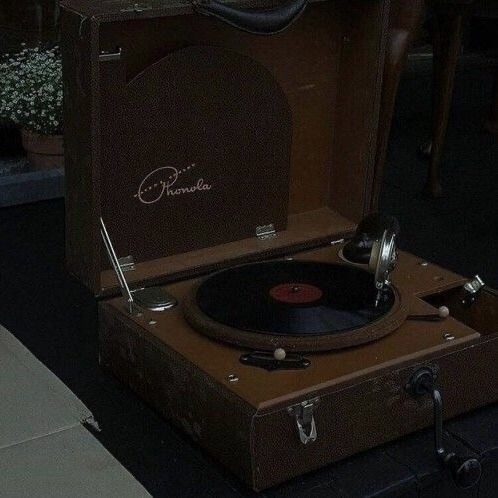
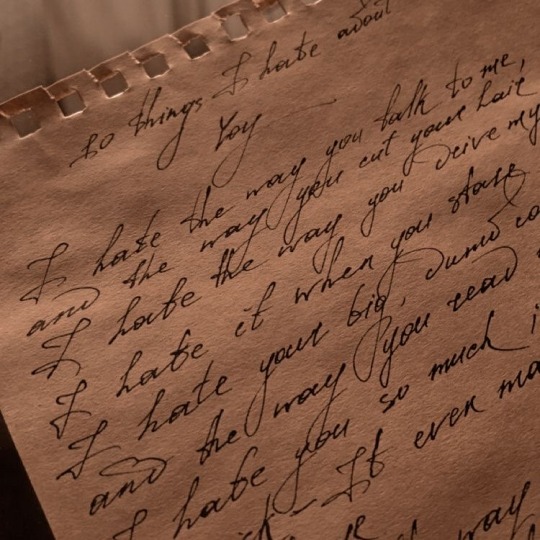

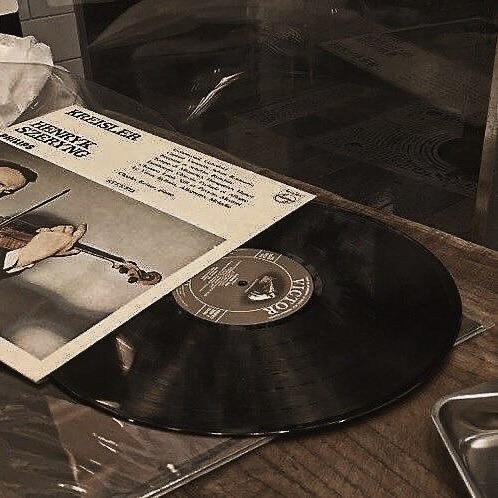
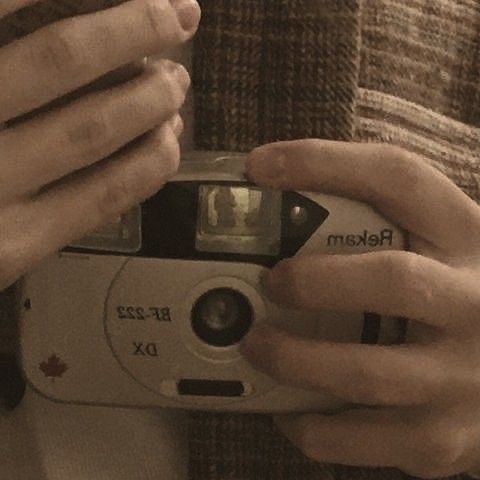


#: ̗̀➛ ayatxt#love letter#20th century girl moodboard#cinematic moodboard#brown moodboard#kdrama icons#kdrama layouts#vintage moodboard#poong woonho moodbaord#dark moodboard#na bora moodboard#lee eunyoo moodboard#gloomy moodboard#20th century girl#20th century girl icons#20th century girl layouts#letter moodboard#love moodboard#poong woonho#na bora#vintage#20th century#retro#music#kdrama moodboard#kdrama packs#20th century girl packs#kdrama
61 notes
·
View notes
Text
熱 byeon woo seok ( ator ) lockscreens !









ⁱᶠ ʸᵒᵘ ʷᵃⁿᵗ ᵗᵒ ˢᵃᵛᵉ, ˡⁱᵏᵉ ᵃⁿᵈ ʳᵉᵇˡᵒᵍ
#byeon woo seok#woo seok byeon#lovely runner#20th century girl#strong girl nam soon#passarela de sonhos#soulmate kdrama#weightlifting fairy kim bok joo#doramas headers#doramas icons#doramas coreanos#kdrama actor#netflix kdrama#asian actor#asian drama#answered asks#send asks#asks open#send me asks#asks#messy boy#messy icons#messy layouts#messy moodboard#messy bios#netflix#viki rakuten#kdrama#moonshine kdrama#os casamenteiros
38 notes
·
View notes
Text


݂ 🌊. ᯤ ݁ ݂ 𖠾 ׁ ⏱️᮫ 𐰊






#20th century girl#kdrama#kdrama moodboard#fresh moodboard#clean moodboard#blue moodboard#moodboard#sea#ocean#blue#tumblr layouts#messy moodboard#clean layouts#alt moodboard#aesthetic#aesthetic moodboard#cute moodboard
31 notes
·
View notes
Text
20th century girl headers




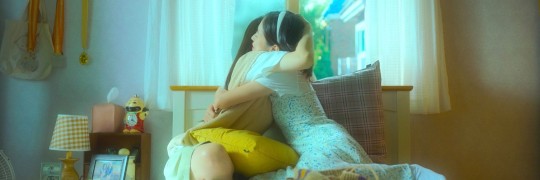
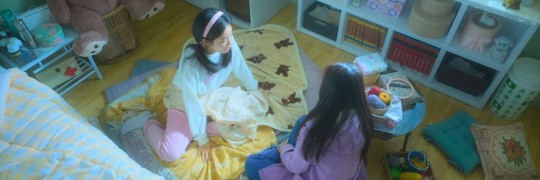

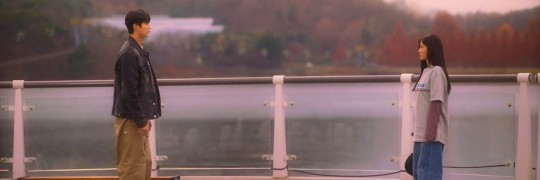

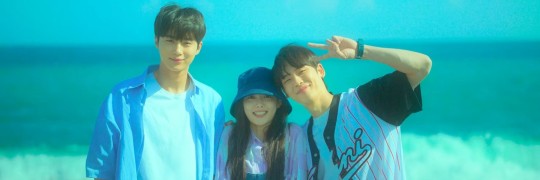
#20th century girl#20th century girl icons#20th century girl headers#20th century girl movie#kdramas icons#kdramas headers#doramas icons#doramas headers#garota do século 20#garota do século 20 headers#garota do século 20 icons#kim yoojung#byeon woo seok#kpop headers#kmovie#netflix movie#kdrama layouts#korean drama#korean movie#kdrama edit
181 notes
·
View notes
Text
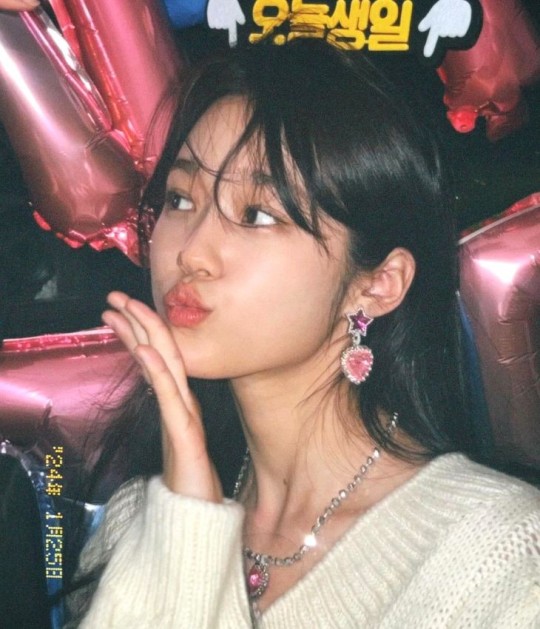

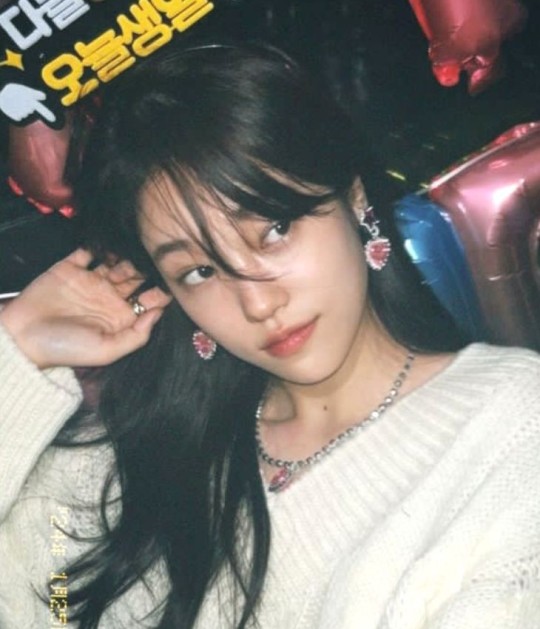
( 🐬 ) . . . — ELEANOR SAGE PARKER, better known as SAGE, is a korean-american artist under BIGHIT ENTERTAINMENT. she's the first member announced of OCEANA, as a LEADER, LEAD VOCALIST & SUB RAPPER.
in the group's story line, she is the oldest and FIRST PRINCESS in the kingdom of oceana.
( ⚓ ) . . . — BASICS !
BIRTH NAME : eleanor sage parker
KOREAN NAME : han seulgi ( hangul: 한슬기 )
NICKNAMES : gigi, park, ele, green, sagie
BIRTHDAY : 8 june, 2000
BIRTH PLACE : colomar, france
ZODIAC SIGN : gemini
NATIONALITY : french
ETHNICITY : korean
FAMILY : mother and father, one older brother,( 1997 ), one younger brother ( 2004 )
LANGUAGES : korean (native), english (100%), french (85%), japanese (75%)
( 🐚 ) . . . — BODY !
HEIGHT : 167 cm (5’5″)
BLOOD TYPE : O+
BODY MODIFICATION : earlobe piercings on both ears, three tattoos on her arms.
FACE CLAIM : roh yoonseo ( actress )
( 🦭 ) . . . — PERSONALITY !
STRENGTHS : kind, empathetic, compassionate, intelligent
FLAWS : perfectionist, stubborn, impatient, overthinking, self doubt
( 🪸 ) . . . — MEMBER'S INFO. !
STAGE NAME : SAGE
AGENCIES : bighit Entertainment ( 2015 - now )
TRAINING PERIOD : 2 years and 6 months
GROUP : ØCEANA ( 2017 - now )
POSITION(S) : leader, lead dancer, sub rapper, sub vocalist
INDIVIDUAL FANDOM : garden(s)
REPRESENTATIVE EMOJI : 🐬
( 🦀 ) . . . — MISC. TRIVIA !
since sage is the oldest of the five, she naturally tends to act as a motherly figure to the other girls. She often checks on the members to see how they're doing and takes care of them when things are well.
she is known to have a strong intuition and often times, her gut feeling and her intuition turns out to be true.
sage is also a great actor. she made her acting debut in the Korean drama our blues as a character and captured the hearts of many. she has also since then acted in a Korean movie named 20th century girl as the second female lead and in the kdrama crash course in romance as the main female lead's daughter.
she is the type of person who would drop anything and everything for the people she loves. she is said to be one of the many social butterflies in the kpop industry as her friends list is too long.
originally born in the picturesque town of colomar, the parker-han family has moved a several of times and sage has lived in a lot of places that she hopes to visit one day. currently her family lives in the Scottish highlands living a peaceful life with sage in Seoul.
true to her name, eleanor is a true nature lover. she tries to be in nature as much as possible and it's quite easy to spot her on a walk outside on the days where she doesn't have any schedule.
eleanor is also known for her creative ability and her beautiful paintings. after much pressure from fans, she has a seperate instagram page just for her art. rumours say that she and hyunjin of straykids talk for hours long about art.
when oceana did live in the dorms, she used to have a seperate room whereas the other members shared it with eachother. this was the outcome of a intense game of rock paper scissors. the groups go-to decision maker is the said game. now all the five girls live in their own in their apartments but are within 30min distance within eachother.

© layout heavily inspired by @hvurglass 's, @saesvns and @n-vrld 's aesthetic, all the rights goes to mona and matty !! ♡♡

# ⋆⠀⠀ʬ.ʬ.⠀⠀٬⠀⠀(⠀⠀&.⠀⠀)⠀...⠀sage.#fake kpop idol#fake kpop gg#fake kpop member#fictional kpop community#fictional idol group#fictional idol soloist#fictional idol oc#fictional idol company#fictional idol addition#fictional kpop idol#fake oc#fictional oc community#kpop original character#kpop incorrect quotes#bighit entertainment
49 notes
·
View notes
Text
Monday Writings - 23rd September 2024
23rd September
Excerpt from: Dubbo and Jane Johnson’s Genie – Chapter 15: Resolving the Distortion
Monday, 23 September 1996
“Lithium atoms, Magnesium atoms, Helium atoms?” Anna Marie Alwyn asked.
“Yes. The fission reaction might have enough energy to get rid of the Distortion,” Daniel Stanton said.
They were in Anna Marie’s house looking up at flashes in the sky. They didn’t realise they were being caused by a starship using different methods to try to get rid of the Distortion (which had been distorting Dubbo’s street layout since the sun had come up when someone had unconsciously wished for it).
The car labelled DS978 (and which belonged to Daniel’s parents) stopped outside the Manera Heights Plaza.
“Ok Jane; this should be close to where you are going,” Adam Greene said.
Jane Johnson got out of the car. “Thanks, Adam,” she said.
Adam drove off and Jane went into the supermarket to have lunch.
It was now 12:30.
Shannon McIntosh left the Odgen’s. “Liz, If I’m not back in an hour, would you look for the opal?”
“I shall,” Liz Blackheath responded.
“Cool,” Shannon said as she headed off.
At the Alwyn’s house, Daniel’s brother, Richard, arrived there. “Is Mum here too?” Daniel asked.
“She was stuck at the Lawson’s house by this Distortion,” Richard said.
“Got it,” Daniel said, still a little concerned.
Not long after leaving the Manera Heights Plaza, Jane found her house. She entered and found her sister, Mel, listening to the radio.
Excerpt from: Mysteries of Aurora
“The Information Desk to start with, then I’ll head to the Nordic Section. It’s supposed to hold most of the codices from that era.”
“Good idea.”
Freya was also curious about the Library. She arrived at one of the eastern entrances. “I guess this dates from the 20th Century,” she murmured as she tried to shield herself from the reflection off of the expanse of glass before her, which was overwhelming despite the fact she was wearing sunglasses. ‘I’ll probably need to use another entrance.’ She took a deep breath, closed her eyes, and listened as she walked towards the door.
“May I help you?” the library assistant asked the colourfully dressed pink-haired girl with her eyes closed before her.
“Yes, directions to the Nordic Art section?” the pink-haired girl asked.
“I could guide you if you want.”
“You don’t need to,” the other said. She then rubbed one of her eyelids. “This is just a habit I have when I get visually overwhelmed,” she added quickly with a tone that implied that she was tired of explaining it.
“Yes, the Library can be overwhelming, especially for new students.”
“Yes. I arrived yesterday.”
“If you go left a dozen paces, there is a tactile map of the library, which is beside a usual map.” The assistant said.
“That will be useful.”
Freya ran her hands over the tactile map of the Library. “I’m here, near the eastern entrance…”
It didn’t take her long to figure out the directions. ‘Easy to remember, either way.’
Olivia and Janara approached the Information desk, near the Grand Atrium. “Let’s see what this says about it,” Olivia said.
“The Grand Atrium dates from the 17th Century and reflects the nostalgia for Roman Aurora of the period.”
“That will be something to look into at some point,” Olivia said.
“You’re looking into the Nordic Era first?”
Excerpt from: Totally Spies – Warehouse 13 –Alex and the Artifact
Beverley Hills High School 2:30 PM
It had been a long day at school. Alex Riviera certainly thought so as she left the school grounds. ‘It’s a good thing we haven’t been WOOHPed today,’ she thought.
Excerpt from: Spider Quinn
Sam squirmed. “What is this? A citizen’s arrest?”
“That’s exactly what it is,” Dafoanairi responded.
“We’ll wait for Spidey to come back, then go out to the waiting cops,” Ninja Talon said.
Back at Casa Lane, the Shadow was ready to leave. “Are you sure?” Trent asked. “Apparently the brownouts have just stopped again.”
“If so, I’ll just do a patrol, just a bit early.”
“I suppose so.”
SpiderGirl switched off the furnace again. ‘Now where’s the cable, so I don’t have to come down here a third time?’ She found it and pulled it out.
SpiderGirl rejoined the others. “Good work,” she said to the others. “The furnace is disconnected,” she called out.
The lights then came back on as the Enigma turned the power back on.
Peterson saw the door open and Ninja Talon leading Sam Elders out, followed by SpiderGirl and Dafoanairi. “Good work,” she said. “The power is back to normal.”
“Glad to hear,” Dafoanairi said.
Ninja Talon handed Sam over.
Peterson cut the ties and cuffed him. “Sam Elders, you are under arrest. You have the right to remain silent. Anything you do say will be used against you in a court of law.”
“I would have gotten away with it, if It wasn’t for those meddling vigilantes.”
The Enigma watched from the roof as Sam was pushed into a car by Peterson. She saw that SpiderGirl and Ninja Talon were walking away to the east. ‘Now’s not the time,’ she thought. She then looked to where Dafoanairi was walking away in the opposite direction. ‘Maybe I’ll follow her instead.’
Dafoanairi realised someone was following her and looked around. She saw the Enigma on a nearby rooftop. “You can come down here,” she said.
“Sure,” the Enigma called out. She climbed down the side of the building.
“I’m glad you and SpiderGirl didn’t come to blows,” Dafoanairi said once the other had joined her.
“There wasn’t much of a chance. There will be another time.”
“Of course.”
“But what did you do, given your inexperience?” the Enigma asked.
“Not much less than you.”
“Good point, but…”
“I helped Ninja Talon subdue him,” Dafoanairi explained.
“Right. Where are you going?”
“A base. I don’t want you following me there.”
“I have my suspicions,” the Enigma said.
“And I have my suspicions about you. Let’s not wreck things by confirming them.”
“I doubt it would wreck things.”
“Maybe not,” Dafoanairi responded. “But it will make things more awkward than they already are.”
The Enigma considered what Dafoanairi had just said. ‘She may be right. Let’s continue as things are and hope we don’t slip up.’ She stopped. “Then I’ll head to the Pizza place,” she said. “See you another time.”
“Bye.”
SpiderGirl and Ninja Talon arrived at the spot beneath the Bridge. They looked around before removing their masks.
“Did Dafoanairi seem familiar to you?” Quinn asked.
“Not really,” Brittany answered. “She was snarky, but many people are snarky. I can be snarky.”
“That’s true, but something reminded me of Daria.”
“Daria? I don’t think so.”
“I don’t think it is either,” Quinn said, not entirely sure. “But it also could be. I still don’t want her finding out.”
“I don’t think she noticed anything about either of us.”
“It was a short time, wasn’t it?”
“Like only a few minutes,” Brittany said.
“True, but I’m glad that the brownouts are resolved.”
“But?”
“Jamie,” Quinn said. “I need to talk to him.”
“But you don’t know where he would be.”
“True, he might be at home, the Pizza place, the Historia, or even at Elly Aitkins’ place.”
“You could try the Historia first,” Brittany suggested.
“Well, it is the closet,” Quinn said.
At the Historia, Daria entered the café. She found that there were many people there.
“Daria!” It was Mrs. Rowe.
“The school let out early,” Daria said.
“I know. The brownouts. But it seems they have been resolved.”
“What is the news saying?”
“That SpiderGirl turned up and resolved the situation, along with Ninja Talon and an apparent fifth vigilante,” Mrs. Rowe said.
“I see,” Daria said as she went up to the counter. “As if Lawndale needs that.”
“It seems that Quinn’s resolution of the issue was temporary.”
“Maybe,” Daria considered.
Quinn entered the café soon afterwards. “Daria? Has Jamie been here?”
“I haven’t seen him,” Daria answered. “But I haven’t been here for long, you might ask Mrs. Rowe.”
“I shall.”
‘Haven’t been here for long,’ Quinn thought. She shook her head. ‘That doesn’t prove anything!’ She entered the office.
“Quinn?” Mrs. Rowe asked.
“Has Jamie been here?”
#alex (totally spies)#brittany taylor#alternate history#daria#daria morgendorffer#fanfic#jane lane#quinn morgendorffer#original fiction#sandi griffin#spider-man#totally spies#trent lane
0 notes
Text
Doodle Fiction: A Genre for the Creative and Humorous.
What is Doodle Fiction?
Doodle fiction is a term used to describe a type of literature that incorporates doodles and handwritten graphics in place of traditional fonts. Doodles are simple drawings that can express ideas, emotions, or humor. Doodle fiction uses doodles to enhance the story and often add humorous elements. Doodle fiction is more text-heavy than graphic novels or manga, and closer to prose fiction than comics in format.
How did Doodle Fiction emerge and evolve?
Doodle fiction is a relatively new genre that emerged in the late 20th century and gained popularity in the 21st century. Some of the precursors of doodle fiction include illustrated novels, which are novels that contain illustrations that complement the text, such as Alice’s Adventures in Wonderland or The Little Prince; and diary novels, which are novels that are written in the form of a diary or a journal, such as Diary of a Young Girl or Diary of a Wimpy Kid. Doodle fiction was influenced by the development of the internet, which enabled global and collaborative creation and dissemination of literature, and the doodle culture, which celebrated the art and fun of doodling.
What are the characteristics and themes of Doodle Fiction?
Doodle fiction is characterized by its use of doodles and handwritten graphics, such as images, words, colors, fonts, and layouts. Doodle fiction often breaks the conventional boundaries of literature, such as linearity, structure, and form. Doodle fiction allows the reader to explore multiple paths and meanings, and to participate in the creation and interpretation of the story. Doodle fiction also challenges the notions of authorship, authority, and authenticity, as the story can be modified, remixed, or co-authored by multiple agents.
Some of the common themes of doodle fiction are:
The relationship between language and reality.
The impact of digital culture on identity and society.
The exploration of new forms of expression and communication.
The critique of the limitations and possibilities of the medium.
The celebration of creativity and innovation.
What are some notable examples of Doodle Fiction?
There are many examples of doodle fiction that have been bestsellers, critically acclaimed, or adapted into other media. Here are some of them:
The Search for the Slimy Space Slugs (2016) by Mike Lowery: A doodle adventure that follows the exploits of Carl, a boy who travels through space with his robot friend. It is the first book in the Doodle Adventures series.
Diary of a Wimpy Kid (2007) by Jeff Kinney: A diary novel that chronicles the life and struggles of Greg Heffley, a middle school student. It is the first book in the Diary of a Wimpy Kid series.
The Absolutely True Diary of a Part-Time Indian (2007) by Sherman Alexie and Ellen Forney: A diary novel that tells the story of Junior, a Native American teenager who transfers to a white school. It is based on the author’s own experiences.
Timmy Failure: Mistakes Were Made (2013) by Stephan Pastis: A humorous novel that follows the adventures of Timmy Failure, a boy who runs a detective agency with a polar bear. It is the first book in the Timmy Failure series.
The Strange Case of Origami Yoda (2010) by Tom Angleberger: A mystery novel that revolves around a paper puppet of Yoda that gives advice to a group of sixth graders. It is the first book in the Origami Yoda series.
Conclusion.
Doodle fiction is a genre that reflects the realities and potentials of the creative and humorous age. It offers new ways of experiencing and creating literature, as well as new perspectives on the role and function of literature in the contemporary world. Doodle fiction is not a trivial or superficial genre, but a valid and valuable form of literature that deserves attention and appreciation.

1 note
·
View note
Photo



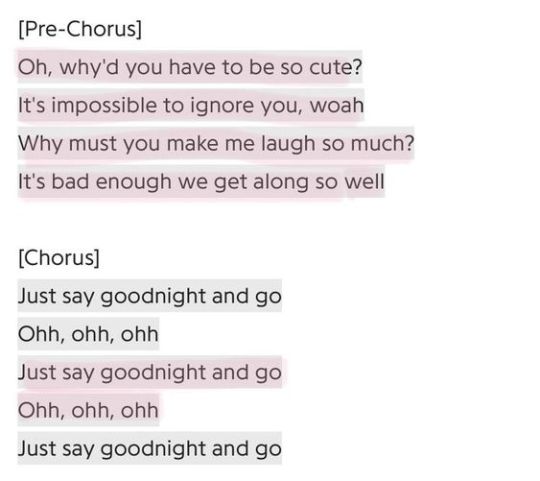

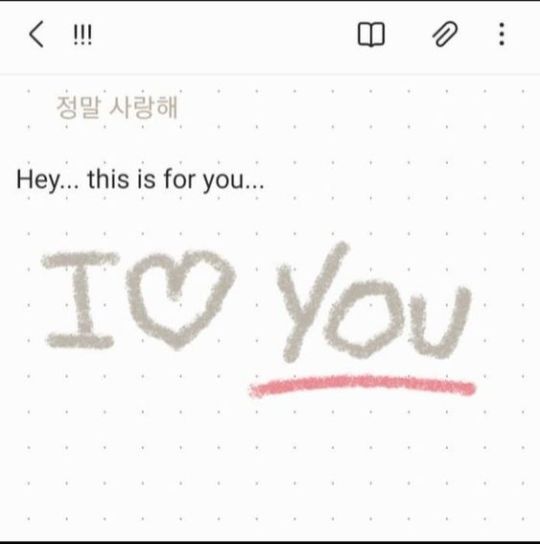
you drew stars around my scars.
#20th century girl#pink#byeon wooseok#byeon woo seok#poong woonho#kdrama#kmovie#byeon woo seok icons#byeon woo seok layout#THIS MOVIE BROKE ME#pink moodboard#20th century girl icons#20th century girl moodboard#aesthetic#baby pink
105 notes
·
View notes
Photo


Shibori Chu-furisode
Location: Japan
Date: 1980-2000
Description: A heavy rinzu (figured) silk chu (medium-length-sleeve) furisode featuring cherry blossoms, fans, kikko (tortoiseshell) flower and stream motifs. The stream is of the shibori technique, while the fans are of a multicolor complex embossing that has a mother-of-pearl effect. Specks of gold-glazing on the black background. Synthetic material white doura (upper inner lining). Furisode, being garments of single young women and girls, are usually bright and colorful; the fact that this example is quite sombre is very unusual and leads one to assume that it was intended for a more solemn occasion. The complex workmanship indicates that this was originally a very expensive kimono, as few workshops in the late 20th century were capable of such a sophisticated undertaking. The design layout on this furisode was probably intentionally meant to respect that of those created in the 18th century.
377 notes
·
View notes
Text
LGBTQ Manga Review – Yuri Is My Job Vol. 1-5

Yuri is a genre deeply rooted in its history and traditions. Dating back over a century, many of the scenes and situations from early "Class S" literature still predominate Yuri titles today. Common elements include senpai-kohai relationships between a bright and cheerful younger girl and an older, more assertive upper-classman. The bonds between the two were not the romantic and sexual love of lesbian narratives, but more sate or "pure" relationships often devoid of lesbian identity or attraction. The presence of S elements ebbed and rose over the past century, but they experienced a surge at the end of the 20th century. Contemporary S literature dominated the Yuri scene for at least a decade, and even now, its effects are still seen in many works today.
Naturally, as with any genre that becomes too entrenched with tropes or clichés, Class S literature became the subject of parody, commentary, and deliberate defiance. And while numerous works have repeated, twisted, rejected, and exaggerated tropes, perhaps none have done so quite as masterfully or as enjoyably as Miman's Yuri Is My Job! The series uses S Yuri's ideas uniquely and masterfully weaves a narrative in and out of them with a layered setting and great characters. The constant balance between and integration of reference, humor, and a strong core narrative had me gleefully enthralled and thoughtfully pouring over every page. I ravenously consumed the series, not just because of the cute cakes and elegant young women, but because I was so invested in the story and intrigued by the manga's premise.

Breaking down every reference is far too daunting a task that frankly deserves its own dedicated article. Still, to briefly overview, Yuri Is My Job! is set primarily at a café themed after an all-girls mission school, Liebe Grils Academy. The servers of the café act as the elite students of the fictitious academy and offer outside visitors, patrons of the establishment, a glimpse into their forbidden world of elegance and sisterly love. The series follows high school student Hime after she starts working at Liebe after accidentally injuring the manager, Mai. The series takes off from there, with Hime participating in the various themed events and navigating challenging relationships with coworkers, including her hostile schwester, the upperclassman who mentors her, and, in the world of the café, partners her.
Yuri Is My Job! is much more enjoyable with an understanding of S literature and themes, as references can slip by readers otherwise. However, particularly after the first volume, the series opens up a little more with an overarching plot that dips in and out of the thematic S material. Even without a grasp of S tropes, readers can enjoy watching server Kanoko struggle with her hidden affection for Hime or get caught up in the excitement and scheming during a popularity competition between the staff.
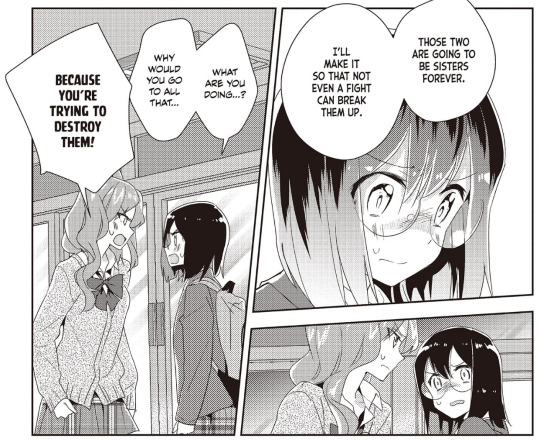
Throughout the first five volumes, multiple shorter narratives, such as the cook getting sick or Hime learning how to serve guests, are interwoven with the overarching character and relationship-driven story. Although almost every character has plenty of time to shine and distinguish themselves, the main plot revolves around three characters, Hime, Yano, and Kanoko.

Hime, the protagonist, maintains a constant facade of the sweet and beloved princess. However, her adorable and charming act is just that, and only two people in her life know her secret, Yano, and Kanoko. Inside the café, Yano acts as Hime's "onee-sama", holding her close and praising her to the delight of Liebe's patrons. However, she is terse and often angry with the girl, unable to move beyond a misunderstanding in their shared past and her insecurities about Hime's true feelings. Kanoko however, acts as a foil to Yano. She relishes Hime's facade, specifically in that she is one of the few privy to the truth, and harbors an attraction to her; she hides these feelings rather than wear them on her sleeve as Yano does. The dynamic between these three drives much of the "action" in the manga.

The more I read Yuri Is My Job! The more I was able to see and appreciate the distinct patterns of storytelling and how the main plot is woven between three layers. The first, and most prominent, is inside the café, in a world dominated by S tropes. Here, characters play politics and plot against each other using their performance and the audience's reaction. For example, thinking how they will get votes for themselves or others during a contest, or else Hime acting cute and loving around Yano, forcing her to return the affection to maintain their roles as schewstern. Outside the fictional world of the café, elements of the story alternate between more grounded drama and thematic moments featuring Yuri tropes. Miman beautifully navigates the relationship between the plot and the parody, weaving a delightful story in and out of different classic Yuri scenarios.
Miman matches this creative story and setting with excellent artwork. Character designs are distinctive and well constructed. So much, that when characters say something "off-screen", a small sketch of their eyes and mouth in the speech bubble is more than sufficient to identify the speaker. Of course, the robust and developed personalities also assist here, as most lines are easily attributable thanks to solid writing and strong personality. The art also features very creative paneling, with almost every page having an entirely different layout. However, the order is still easy to follow and reads naturally.
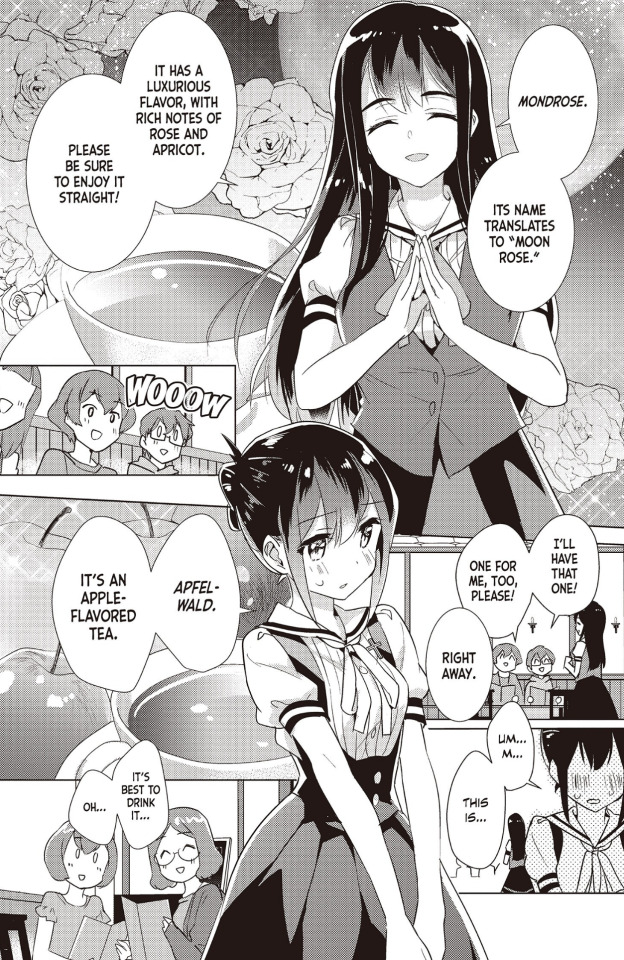
Not only is the art pleasing to look at, but it also adds to the manga's setting and parody of Yuri tropes. Panels feature the girls holding each other in dramatic and literally flowery poses, like a shot straight out of Strawberry Panic, complete with a backdrop of lilies. Appropriately, these fantasy-inspired poses occur in the café, often to the pleasure of adoring patrons screaming in celebration (thus mirroring my reactions). Like the other Yuri tropes, these artistic presentations occasionally jump outside of the café in more emotional or poignant moments. However, in a few crucial scenes, those more related to the narrative when it steps outside the boundaries of Class S, feature more grounded, although still dramatic, art. A particular shot in Volume 4 where Kanoko confides her hidden feelings to her senior, Sumika, and is comforted, sticks out in my mind just for this reason. It is a perfect example of art assisting the themes of the narrative and changing to suit the situation.

Yuri Is My Job! focuses mainly on Class S style storytelling, and thus, while it has plenty of traditional Yuri imagery, there is a starkly limited amount of lesbian content. Sure, readers can enjoy a decent number of illustrations featuring girls holding each other in a dramatic pose, but this is the act put on for the cafe, which is copying the "practice" relationships of S literature, themselves devoid of lesbian attraction. It is an imitation of an imitation, not queer content. Of course, this is by design, but it does mean that if readers want a grounded lesbian romance, they will find the series lacking. A bit of lesbian content does exist, Kanoko's crush on Hime exists outside the boundaries of work and S tropes, a relationship told in a flashback was, at least to one of the characters, "real," and there are signs of an eventual romance. However, the lack of lesbian identity should not be a reason to avoid this excellent manga.

Yuri Is My Job! is one of the most brilliant and exciting Yuri works out there. The ways Miman plays with the tropes and expectations of the genre are hilarious, complex, and exceptionally compelling. The characters are exciting and watching their stories weave through different classic Yuri scenes and tropes is as breathtaking as it is enjoyable. My sincere thanks to Diana Taylor, and Jennifer Skarupa and editor Haruko Hashimoto, for so deftly translating this series and preserving the S ties. I cannot wait to visit the students, or rather employees, of Liebe Girls Academy, in Volume 6.
Ratings: Story – 10 Characters – 8 Art – 9 LGBTQ – 3 (Yuri 10) Sexual Content – 1 Final – 9
Review copies provided by Kodansha Comics
Get Yuri Is My Job! digitally and in paperback today: https://amzn.to/3gNNeRt
Buying manga helps support developers and publishers. YuriMother makes a small commission off sales to help fund future content.
#yuri#lgbt#lgbtq#lgbtq+#queer#gay#romance#manga#art#reviews#yuri is my job#lesbian#shoujo#comics#literature#girls love#wlw
394 notes
·
View notes
Text
Winchester Mystery House

Sarah Lockwood Winchester, née Pardee, was born in New Haven, CT in 1839. In her Earthly years, she amassed a shit ton of wealth following the death of her husband, William Wirt Winchester, and even managed to nab a 50% holding in his company, Winchester Repeating Arms Company, a popular manufacturer of repeater rifles.
Anyway, the happy couple were married in 1862. And shortly thereafter they had tried to procreate, but their only daughter, Annie, had died ten days after birth of marasmus, a severe form of malnutrition that is typically seen in children with severe bouts of diarrhea. Remember, in the 1800s something as simple as diarrhea could have wiped you from the mortal realm.
But let’s jump ahead to March of 1881, when William Wirt Winchester passed way from a bout with tuberculosis, leaving our girl Sarah with a fortune of $20 million (roughly $520 million in 2021 dollars). Plus, her holding in the Winchester Repeating Arms Company created an income of $1,000 a day, which is nearly $26,000 in current cash.
So, how did Winchester spend her fortune? Did she purchase fur coats? Exotic animals? Fancy bling-bling? No, instead she commissioned the construction of a Queen Anne Style Victorian mansion in San Jose, CA that is now known as the Winchester Mystery House.
Legend has it, the grief-stricken widow had visited a Boston-based medium, who claims to have spoken to her late husband who spiritually advised her to sell their property in New Haven and head out west to endlessly build a home for herself and the spirits of those who were killed by the hands of Winchester Rifles. According to this otherworldly advice, this would be the only way to appease the spirits who were ripped from this world way too early by Winchester’s riles.
In 1884, she ended up in San Jose, California where Sarah had come across an unfinished farmhouse and used this land to complete her masterpiece. Winchester ordered constant “around-the-clock” construction of new rooms, stairways to nowhere, hidden rooms, trap doors, secret passage ways, a skylight in the floor, spider-web windows, doors that open to blank walls, a door on the second floor that opens to a drop, and even glass windows designed by Louis Comfort Tiffany, of Tiffany & Company fame.
Carpenters worked on the house all day and all night, hammering away with seemingly no endgame in sight. Word on the street is that when news of Sarah’s death caught attention of the working crew on shift the morning of September 5, 1922, they immediately quit, leaving their half-eaten sandwiches and half-hammered nails sticking out of the walls.
At one point, the home was seven stories tall, but a 1906 earthquake had toppled some of the mansion, resulting in the current layout, which now stands at 4 stories. The rooms that were damaged by the quake were never repaired and just simply boarded off.
Facts about the Winchester Mystery House:
There are roughly 161 rooms
There are about 40 bedrooms (Winchester would sleep in a different room each night to confuse spirits)
Despite numerous bathrooms, there was only one single working toilet for Winchester (just like the bedroom switching, other bathrooms were decoys to confuse the spirits)
The house is known for its stained glass windows and other fancy adornments
As previously mentioned, Winchester utilized the labyrinth-like design intentionally to confuse the spirits of her whereabouts. However, circulating rumors suggest that Sarah Winchester left behind clues that she may have been a member of a secret society. The house is riddled with mysterious symbols that many suggest point to secrets that have yet to be solved. It seems that Winchester was obsessed with the number 13. Many of the windows have 13 panes, many stairwells contain 13 steps, and some rooms even have 13 windows. Plus, her last will and testament contained 13 parts.
Or, perhaps, Sarah may have just become overrun with grief and descended into undiagnosed madness. Following her husband’s death and sojourn to San Jose, she became a well-known recluse who very rarely left the house. Her only contact with others included hired servants who lived on the third floor, her many contractors, and her niece. Winchester typically denied entrance to anyone who showed up at the front door, including Teddy Roosevelt.
She even had a séance room which she used to communicate with the dead. She insisted to be the only person to enter this room. Two years following her death, legendary escape artist Harry Houdini visited the mansion to conduct a midnight séance. It’s said that Houdini held the séance in a room now known as the Witch’s Cap, which he believed may have been the same room Winchester used. The Witch’s Cap was an unfinished room located in the south wing that had a cone-shaped ceiling that sort of resembled the shape of a witch’s cap.
Anyway, Houdini was a huge skeptic of the spiritualism movement that arose in the years following the Civil War. It’s said that many people, seemingly mostly women, became intoxicated with the idea that they could communicate with their dead husband, child, etc. Post-Civil War America was a hotbed for this movement due to families wanting to communicate with those who were killed in action. The movement continued to be popular well into the 20th century.
Since Houdini had believed the spiritualism movement to be hogwash, he became very active in disproving mediums, clairvoyants, and other individuals who claimed to have precognitive abilities. When the story of angry spirits roaming the halls of Winchester Manor caught Houdini’s attention, he went to the Winchester Mansion to disprove this belief. Following the séance, Houdini remained very mum on the details about what he had experienced, leading many to believe that he did in fact contact the dead.
Following Sarah Winchester’s death, appraisers deemed the mansion to be “worthless” due to damage from the 1906 earthquake, its unfinished design, and elaborate layout. Despite this, the house was sold at auction to an investor for $135,000, who then began conducting tours of the mansion about five months following Winchester’s death.
Today, you can still tour the mansion. Over the years, tour guides have cited that the mansion’s third story appears to be the most haunted, which is where a number of the hired servants had resided. Doors can often be heard opening and closing whenever there does not seem to be any other people around.
Was Sarah Lockwood Winchester visited by the restless spirits who died at the hands of her late husband’s rifles? Was Harry Houdini the key to solving this mystery? Or, was this all hogwash? The world may never know.
7 notes
·
View notes
Text

Barbara Jane Bates (August 6, 1925 – March 18, 1969) was an American singer and actress, best known for her portrayal of Phoebe in the 1950 drama film All About Eve. and as Katy Bates on It's a Great Life (1954-1956).
The eldest of three daughters, Bates was born in Denver, Colorado. While growing up in Denver, she studied ballet and worked as a teen fashion model. The shy teen was persuaded to enter a local beauty contest and won, receiving two round-trip train tickets to Hollywood, California. Two days before returning to Denver, Bates met Cecil Coan, a United Artists publicist, who she would later marry.
In September 1944, 19 year old Bates signed a contract with Universal Pictures after Cecil Coan introduced her to producer Walter Wanger. Soon after, she was cast as one of the "Seven Salome Girls" in the 1945 drama, Salome Where She Danced starring Yvonne De Carlo. Around this time, she fell in love with Coan, who was married with two sons and two daughters. In March 1945, Coan divorced his wife Helen Coan and secretly married Bates, on 25 March 1945, in Chihuahua, México.[3][4] Bates spent the next few years as a stock actress, landing bit parts in movies and doing cheesecake layouts for magazines like Yank, the Army Weekly and Life. It was one of those photo sessions that caught the eye of executives at Warner Bros. who signed her in 1947. Warner Bros. highlighted her "girl-next-door" image and her acting career took off. She appeared with some of the biggest stars of the day including Bette Davis in June Bride and Danny Kaye in The Inspector General.
In 1949, Bates's contract with Warner Bros. was terminated when she refused to go to New York City to promote The Inspector General. Despite being fired by Warner Brothers, she signed a contract with 20th Century-Fox later that year.
In late 1949, Bates auditioned for the small role of Phoebe in Fox's upcoming All About Eve. In competition for the part was Zsa Zsa Gabor and others, but Bates impressed the producers and was given the part. She made a short but important appearance as the devious schemer, Phoebe, at the end of the film. Bates's image is enshrined in the film's last scene, posing in front of a three-way mirror, while holding the award won by her idol Eve Harrington, played by Anne Baxter. This memorable final scene left critics and audiences intrigued by the young actress, who they thought would star in a sequel to All About Eve. The Hollywood Reporter said of her performance, "Barbara Bates comes on the screen in the last few moments to more or less sum up the whole action and point of the story. It's odd that a bit should count for so much, and in the hands of Miss Bates all the required points are fulfilled."
After her appearance in All About Eve, Bates co-starred in Cheaper by the Dozen, and its sequel Belles on Their Toes, with Jeanne Crain and Myrna Loy. In 1951, she landed a role opposite MacDonald Carey and Claudette Colbert in the comedy Let's Make It Legal. Fox refused to loan out Bates for the role of the suicidal ballerina saved by Charlie Chaplin’s aging vaudevillian in ‘Limelight’ (1952). She co-starred with Donna Reed as the love interests of Dean Martin and Jerry Lewis in the 1953 hit comedy The Caddy.
Despite a seemingly successful career, Bates' life, both on and off screen, started unravelling. She became a victim of extreme mood swings, insecurity, ill health, and chronic depression. In 1954, she won the role of Cathy on the NBC sitcom It's a Great Life, co-starring Frances Bavier as her mother, Amy Morgan, and James Dunn as her uncle, Earl Morgan. After 26 episodes, she was written out of the show due to her erratic behavior, depression and instability. Bates tried to salvage her career and travelled to England to find work. She was signed on as a contract player with the Rank Organisation, only to be replaced in two leading roles before filming began. Bates continued to be too emotionally unstable to work and in 1957, her contract with the Rank Organisation was cancelled.
Upon returning to the United States in 1957, Bates and her husband got an apartment in Beverly Hills. Later that year, Bates made her last film, Apache Territory, which was released in September 1958. She then appeared in two television commercials, one for floor wax and another endorsing a now unknown product with Buster Keaton. In 1960, Bates's husband Cecil Coan was diagnosed with cancer. Bates put her career on hold to care for her ailing husband. The strain eventually became too much for her. She attempted suicide by slashing her wrists and was rushed to Cedars-Sinai Hospital where she soon recovered. She made her final onscreen appearance in an episode of The Saint that aired in November 1962.
In January 1967, Bates's husband Cecil Coan died of cancer. Devastated by his death, Bates's depression worsened and she again became suicidal. Later that year, she returned to Denver and fell out of public view. For a time, Bates worked as a secretary, as a dental assistant, and as a hospital aide. In December 1968 she married for the second time: to a childhood friend, sportscaster William Reed. Despite her new marriage and location, Bates remained increasingly despondent and depressed.
On March 18, 1969, just months after her marriage to Reed, Barbara Bates committed suicide in her mother's garage by carbon monoxide poisoning. She was 43 years old. She is buried at Crown Hill Cemetery in Jefferson County, Colorado.
#barbara bates#classic hollywood#classic movie stars#golden age of hollywood#old hollywood#1940s hollywood#1950s hollywood
20 notes
·
View notes
Text
HERE I GO ANSWERING EVERYTHING FROM AN ASK PROMPT REAL QUICK AGAIN
0: Height - 5′2″ 1: Age - 15.7 at death, 520 overall currently 2: Shoe size - US 5-6. Depends 3/4/5: Do you smoke/drink/drugs? - Yes 6: Age you get mistaken for - Depends how I’m presenting myself. The youngest I’ve been accused of is 10. The oldest I’m scraped by as is in my early 20s with a good fake ID. 7/8: Have/Want tattoos? - No. Also No. But I let Thea practice on me occasionally. They just vanish when I heal so it’s fine. 9: Got/Want any piercings? - No. There are times I would like my ears done because I will be in the mood for shiny things. 11: Best friend? - The twins (Thea & Steph). 12: Relationship status - Single. Not looking. 13: Biggest turn ons14: Biggest turn offs - No one’s business. For 14 I will say the awareness of who I am. 15: Favorite movie - Hard to say at this point. 16: I’ll love you if… - you accept me for who I am including are understanding and sympathetic of the actions I’ve taken to reach this point. 17: Someone you miss - I frequently think back on a certain Nossie I worked closely with during the inter-war period of the early 20th century. I miss him dearly. 18: Most traumatic experience - Hard to pin point now. Likely one of the murders to occur within the first 30 years of my life. 19: A fact about your personality - It’s a non-constant. 20: What I hate most about myself - The world is closing doors in on me. 21: What I love most about myself - I’m still here. 22: What I want to be when I get older - Powerful enough to protect those and what I care about. 23: My relationship with my sibling(s) - Mortal I can hardly recall. Undead... mixed depending on individual. I’m sure some resented me as I signed off on sending them to their deaths. 24: My relationship with my parent(s) - Mortal I cannot recall. Mother I haven’t seen in over 200 years now but it shifted over the years from adoring doting mommy’s boy to bitter and spiteful loyalty held in place only by a bond. I fear her now. My predecessor had me pose as his son sometimes and were we to count him as ‘Father’ it wouldn’t change my desire to tear him apart and grind him to dust under my teeth. 25: My idea of a perfect date - Dancing, a long walk through a well maintained garden. Maybe a picnic. Just general quality peaceful fun time. 26: My biggest pet peeves - When I do something impulsive and have to deal with the consequences of my actions. 27: A description of the girl/boy I like - Taller than me. Dark hair. 28: A description of the person I dislike the most - Taller than me. Dark hair. 29: A reason I’ve lied to a friend - To keep them safe. To keep myself safe. 30: What I hate the most about work/school - Not always but the presumptions about me that come with it can be an issue. 31: What my last text message says - ‘Sending email frm sock acct. Details there.’ 32: What words upset me the most - That’s something depending on the moment. 33: What words make me feel the best about myself - There are no words alone that can do this. 34/35: What I find attractive in women/men - When they have really nice soft hair that’s easy to run ones fingers through. Length doesn’t matter. Just nice to mess with when it’s soft. Also if they can pick me up like the fancy Prince I am that’s fun. 36: Where I would like to live - Honestly, despite any bad memories associated with Mother I would love to have a modernised version of our manor. It was my home for so very long, the most long held home I ever had. There is a comfort in the layout. 37: One of my insecurities - I am aware of the fact my age at death has left me with a general impulsiveness. Knock knock frontal lobe what’s that? 38: My childhood career choice - Merchant. It’s what my father was so it was simply presumed. 39: My favorite ice cream flavor - Caramel. 40: Who I wish I could be - Me but better. 41: Where I want to be right now - Somewhere where I can imagine it’s a simpler time alongside my dearest friends. 42: The last thing I ate - Some rando that tasted vile but he was drunk at least so that sort of made up for it. 43: Sexiest person that comes to my mind immediately - Thea. 44: A random fact about anything - Powdered wigs sucked, I hated them, and I’m glad they’re not something I’m obligated to wear anywhere anymore.
4 notes
·
View notes
Text
HOW THE ANIMATION SERIES ‘POWERPUFF GIRLS’ AND ‘MY LITTLE PONY’ BUILD STEREOTYPES ABOUT GENDER AND SOCIAL BEHAVIOUR THROUGH CERTAIN CHARACTERS?
ABSTRACT
The topic of this essay is related to animation - art as ancient as it is modern. Despite a step up aside from standard graphic design, animation deserves properly attention as the only art that unites everyone else: drawing (illustration), acting (movement), music and narrative, and this makes it so appealing field for visual expression.
The subject of this study will be the wonderful world of the creative family of Craig McCracken and Lauren Faust and this choice is not accidental. He is a consequence of long-term interest (initially as a fan, and now professionally) in the animations created by them.
This study will seek to reinforce the stereotype that in the late 20th and early 21st century women are independent , strong enough and able to cope with life's challenges on their own, which is embedded in 'Powerpuff Girls' (animated series created in 1998 by Craig McCracken), as well as the stereotype that behaviour is not a function of gender and in this sense there are no 'good' or 'bad' genders. There are those who act socially acceptable and those who do not, which is reflected in both animated series : 'Powerpuff Girls' and 'My Little Pony : The Friendship is magic"(created in 2010 by Lauren Faust.)
The influence that these series cause as well as their reflection in social life and in some manifestations of the subculture will also be affected.

This essay will offer an overview of some gender and behavioural specifics of the characters from animated series ‘Powerpuff Girls“’ (1998) and ‘My Little Pony : Friendship Is Magic’ (2010). This matter will be explored using various descriptive and comparative methods and knowledge of semiotic analysis obtained in previous levels of education, as well as with the help of well-studied existing literature on gender stereotypes and human behaviour and their reflection in a modern animation for children.
● The composition (environment) as a surrounding background in the two animated series will be analyzed and compared. Will be answered how and to what extent it can influence the actions of the characters which reflect certain social and gender stereotypes.
● Concepts such as Second and Third Wave Feminism will be addressed and an analogy will be made between feminism and the heroines of the Powerpuff Girls series.
● A review of the actions of the characters from the above-mentioned animated series will be made, and the link between existing concepts of the role of gender and social behaviour in society will be sought. The perception that the imposed gender stereotypes should generate certain perceptions, questioning their appropriateness will be challenged (and this will protect the rights of certain societies and groups such as the Queer society, for example.) The essay will stand behind the thesis that behavior is not a function of gender, considering the behaviour of a particular character with an unidentified gender identity from "Powerpuff Girls".
● Existing gender stereotypes will also be compared and challenged with some alternative ways that determine the place of gender identity in human society. Will be answered of the question why animation designed for a little girls, such as "My Little Pony", affects a certain group of people (young men called "Bronies") and how they interpret the gender stereotype (or lack thereof), creating and developing a certain modern subculture, such as the Bronylore sites, for example.
The choice of this topic is due to the fact that in the process of studying I was very impressed by the tasks related to video making and the animations that I used in performing these tasks. In addition, the topic expresses my desire to continue to engage in animation as a practitioner in a future, and if this happens, all of the above issues regarding gender and behavioural stereotypes would be useful in creating credible animated characters.
All cartoon characters have their own story, and even if the interactions between them seem to "make" the film, the fact that the characters are always in touch with the world around them should not be overlooked. They are part of it, they see it, they touch it, they move and meet other peers in it and all this pushes the action forward. This surrounding world and its story creates the composition of the animated series, and it depends on it whether the action will increase or decrease when one of the characters is placed in it. Therefore, here will be considered some characteristics of the composition and their manifestation in the two considered animated series ‘Powerpuff Girls and ‘My Little Pony : The Friendship is Magic”.
The layout of the composition in the animated films is a special type of design, which is created by layout artists and background painters.
Both the exterior and the interior composition in 'Powerpuff Girls' and 'My Little Pony: The Friendship is Magic' are used as a background for the actions of the characters in building social and gender stereotypes. Let's see how this works.
The exterior images of Townsville in the 'Powerpuff Girls' series appeared as a result of the interaction between the bourgeois aesthetics of post-war America in contact with the more popular taste of the 1950s. They show a love of urban architecture and its details (especially the Precision style, which later grew into American modernism and the UPA house style - the dominant style in animation in the 50s and 60s.) The three little heroines act in this urban environment, by demonstrating their superpowers and protecting the city from evil monsters and invaders, which reinforces the stereotype for the belief in traditional values.
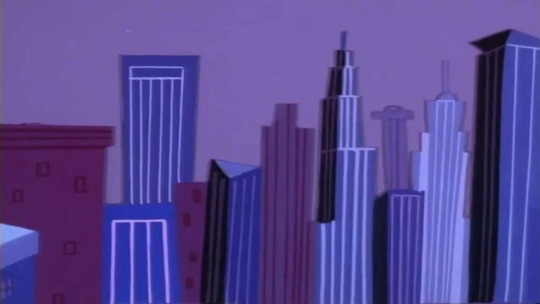
Fig.1. The City of Townsville (Source : Fandom.com)
In contrast to Townsville's modern urban environment, Ponyville's exterior view from 'My Little Pony' expresses the idea of living in a natural environment. Ponyville's infrastructure is presented as medieval architecture in a country style, recalling the fact that the Middle Ages were the period in which most magical spells were performed. The typical cottages have a wooden frames and thatched roofs overhanging the upper floors. There are all kinds of buildings here, just like in the human commune: train station, clock tower, hospital, day spa, joke shop, Hay cafe, Golden Oak library, theater, even school (which challenges one of the possible existing stereotypes who claims that this animated series presents the girl's brilliance and beauty as more necessary than knowledge and learning.)
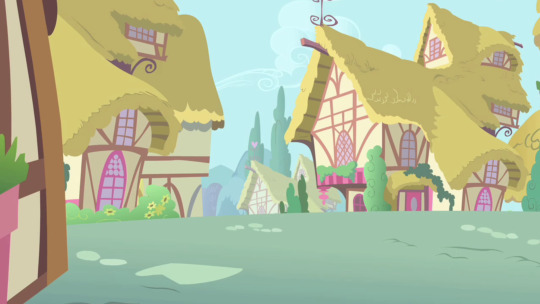
Fig.2. Ponyville
(Source : Fandom.com)
As can be seen from the design of the three girls' bedroom, it is built almost entirely in pink and pale purple (except for the blankets, colored with the characteristic individual colour of each one of them), which is associated with the female sex, according to the existing modern social stereotype.
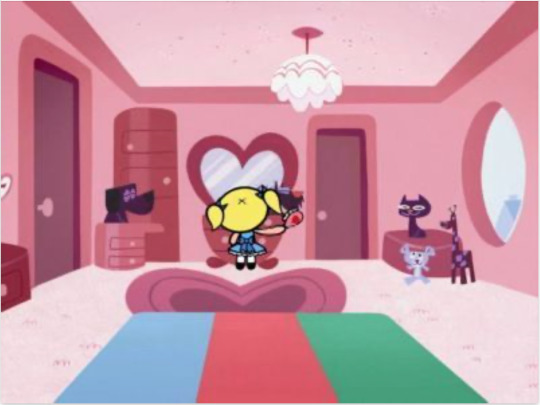
Fig.3. The bedroom of Powerpuff Girls
(Source : Weheartit)
This certain ‘girlish colours' trend in the interior composition of bedroom continued a decade later in "My Little Pony: Friendship Is Magic" and this once again confirm this stereotype: pink and pale purple are just girlish colours (and therefore unacceptable for boys.)
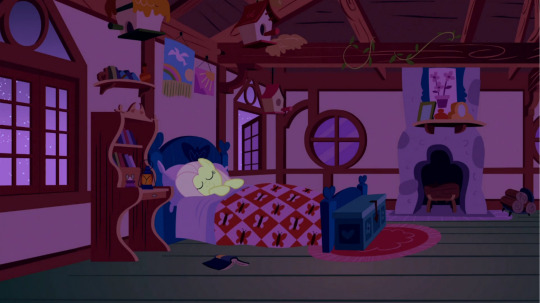
Fig.4. Fluttershy's bedroom
(Source : derpibooru.org)
This naturally raises the question: do not such restrictions impose from an early age a reluctance to see the other point of view, that of the opposite sex? Or it is deliberately ignored? Isn't part of the natural emotion of childhood taken away by stereotyping such as 'animation for girls' or 'colours for girls'? Because it is a fact that 'My Little Pony" is perceived equally positively by both sexes up to a certain age (4-6 years), but not after the children pass primary school age, where the distinction becomes especially pronounced.
Usually the exterior and interior compositions in children's animated series change very quickly as a result of various factors, some of which are:
● Atmosphere (Rainy, Cloudy, Sunny, Underwater, Outer Space, Smoky, Foggy, Dusty); ● Mood of the characters (Sad, Bored, Аngеr, Excited); ● Colour and technique used (Monochromatic/graphic/ оr high-contrast colour, Realistic оr Abstract); ● Point of View and Object Specifics (proportions). Since they all influence the construction of certain stereotypes, some of them will be visually analyzed using the semiotic methods studied in the previous levels.
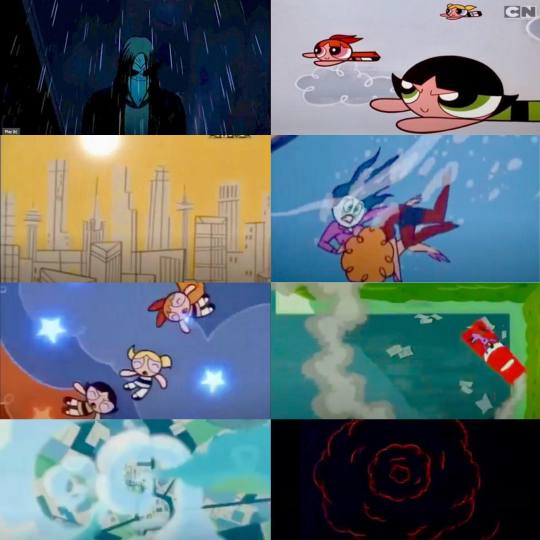
Fig.5. Atmosphere composition : Rainy, Cloudy, Sunny, Underwater, Outer
Space, Smoky, Foggy, Dusty
( Source : Tumblr)
● VISUAL ANALYSIS I :
* Representation :
This distribution includes eight compositions of the layout reflecting the atmospheric weather: Rainy, Cloudy, Sunny, Underwater, Outer Space, Smoky, Foggy, Dusty.
* Where is it located?
The City of Townsville, in the air, underwater and in space.
* How is the characters are placed in the compositional frame? What surrounds them?
- Rainy composition :
In the center of the composition is a man who is strangely smiling. He wears sunglasses while it rains from the sky. Only the upper part of his body up to his shoulders is visible.
-Cloudy composition :
In the foreground is a girl with black hair and green clothes, behind him a girl with orange hair and pink clothes, and behind them a blond girl in blue clothes. All three fly in the clouds.
-Underwater composition :
In the center of the composition are two women surrounded by water who appear to be sinking.
-Outer Space composition :
To the left of the center and below is the girl with black hair and green clothes; in the middle of the composition is a blond girl with blue clothes, and at the top right of the center is the girl with orange hair and pink clothes. They fly (or fall) from the starry sky around them.
* Is their activity presented as typical (or atypical)?
The three girls have superpowers, so the actions they perform can be defined as typical for them.
* Does the design meet the genre expectations?
Yes.
* What is the preferred audience?
Mostly children's audience (over 3 or 4 years), but also for all older children and their parents.
* How is the composition built? Why is the composition built in this way?
- Rainy composition - In dark blue colours, because apparently the action takes place at night. The emphasis is on the figure of the man in the center for which lighter shades of blue are used.
- Cloudy composition - The composition is built in monochrome colours to make the three characters to stand out.
-Sunny composition - Townsville buildings are only presented as outlines (no details).
-Underwater composition - The composition seems to be diagonal and creates a feeling of fluidity due to the position of the bodies of the characters underwater.
-Outer Space composition - Here the feeling of height is achieved through the facial expression and positioning of the bodies of the three girls within the composition, which cannot be the same if the action takes place on the ground.
-Smoky composition - This composition is interesting because of the viewing angle (from above). Maybe that is the point of view of someone who flies.
-Foggy composition - Just like the previous composition in this one the angle of observation it is from above.
-Dusty composition - There are no figures here, and the feeling of dust (smoke) comes from the abstract shape of the black background, in the center of the composition, which resembles smoke after an explosion.
* What is the message here?
The message is that in most cases, girls (women) can have many different abilities to deal with the dangers that surround them.
* Stereotype and its challenge
A stereotypical example here may be that girls have to stay at home where they are well protected because they do not have the necessary strength to deal with the dangers of the world around them.
However, they go out, use their superpowers and prove that this is possible, which challenges the stereotype.
● DECONSTRUCTION :
* Foreground.
In the foreground here can be seeing :
- Rainy composition - A long face man with a strange smile.
- Cloudy composition - A girl flying into the sky.
- Sunny composition - City landscape.
- Underwater composition - Two drowning female figures.
- Outer Space composition - Three flying (falling) girls.
- Smoky composition - Smoke.
- Foggy composition – Clouds.
- Dusty composition - Explosion.
* Background.
In the background can be seeing :
- Rainy composition - Part of the urban landscape of Townsville.
- Cloudy composition - Two more flying girls and clouds.
- Sunny composition - Sunny sky.
- Underwater composition – Water.
- Outer Space composition – Sky and stars.
- Smoky composition - Car and building.
- Foggy composition - A city seen from above.
- Dusty composition - Black sky.
* The shapes in the composition are :
- Rainy composition - Dashes (rain.)
- Cloudy composition - Circles (eyes, heads, clouds.)
- Sunny composition - Vertical and horizontal outlines of buildings.
- Underwater composition - Body shapes (bodies.)
- Outer Space composition - Circles (heads, clouds.)
- Smoky composition - Rectangles and angles (car and building) and Abstract shapes (smoke.
- Foggy composition - Abstract shapes (Clouds.)
- Dusty composition - Abstract shapes (Smoke after an explosion.)
* The colours used are :
- Rainy composition – All shades of blue: from dark to electric blue.
- Cloudy composition – Monochrome gray, black, orange, yellow, green, pink, blue.
- Sunny composition – Orange, beige.
- Underwater composition – Blue, orange, purple.
- Outer Space composition – Blue, orange, black, green, pink, yellow.
- Smoky composition - All shades of green: from dark to electric green.
- Foggy composition – Blue-green.
- Dusty composition – Black and red.
* Positive and negative spaces :
The only composition in which the ratio between positive and negative space is the same is the Sunny composition.
● ICONOLOGY (According to Panofsky's three levels) :
* Rainy composition –
- Level 1 Description : Here you can see a long-haired smiling man on a rainy night. There is a building on his right.
- Level 2 Identification : Мъжът изглежда странно защото носи слънчеви очила докато вали дъжд. He's probably walking down a street because the outlines of a building can be seen on one side of him, and it looks like the light from a street lamp is falling on him.His facial expression is smiling but that smile is sinister rather than benevolent. He seems to be a person who has committed a crime and is happy with it. The night time in which this walk takes place proves this once again because night is the best time to cover up the evidence of the crime, and the rain only reinforces the feeling of anxiety in the whole composition.
- Level 3 Analysis : From ancient times, mankind has known such villains who committed their crimes at night: Bluebeard and Jack the Ripper are among them.
* Cloudy composition –
- Level 1 Description : Herе can be seen a cloudy sky in which three girls are flying.
- Level 2 Identification : The sky is thick gray, there are clouds, which suggests that there will probably be a storm soon. The girl's face in the foreground is angry. The flying girls are in a hurry for somewhere. The posture of their bodies shows their determination and fearlessness. Even the approaching storm cannot stop or frighten them.
- Level 3 Analysis : Historically, such a brave girl-hero is Jeanne d’Arc, whо leads an army, wins many battles and becomes proof of how a young girl can be stronger than many men and win much more than them; Amelia Earhart, who began with her flying experiments at the age of 20 and became the first female aviator who fly solo across the Atlantic Ocean and more recently Greta Thunberg, who is a winner of Human Act Award 2020 and The International Children’s Peace Prize, which is awarded to child who has made a significant contribution to advocating children's rights.
* Sunny composition –
- Level 1 Description : Here can be seen а very high buildings and above them a sunny sky.
- Level 2 Identification : The sun in the sky is almost in the middle of the composition, indicating that it is probably just before noon. There are various office buildings and TV towers, and judging by the height of the buildings, it can be assumed that this is happening in America, because there are cities with similar architecture : Boston, Chicago and New York in America, for example.
- Level 3 Analysis : The Empire State Building is a 102-story skyscraper located in Manhattan, New York. It was built in Art Deco style and it was completed in 1931.
* Underwater composition –
- Level 1 Description : Here can be seen two women drowning underwater.
- Level 2 Identification : Women are not on an equal footing, one of them with orange hair seems to be in the power of the other with black hair. The black-haired woman's face is visible, and it shows that she is furious, while the other woman's face is hidden. Both are wearing clothes, not swimsuits, which shows that they fell under the water not of their own volition, but after an accident.
- Level 3 Analysis : Is it possible that someone standing under water will come to life again? Yes, if his name is Harry Houdini. The magician of the late 19th and early 20th centuries has repeatedly proven that it is possible (albeit with the help of illusion.)
* Outer Space composition -
- Level 1 Description : Here can be seen three girls flying or falling amongst the outer space.
- Level 2 Identification : The girls' facial expressions suggest that they do not enjoy this flight. It seems that someone threw them into space against their will.
- Level 3 Analysis : From 7 to 20 February 2008, a space flight took place with the ship Atlantis. During the flight, the German Hans Wilhelm Schlegel went into space for 6 hours and 45 minutes to prepare the module for scientific work, as well as to replace the spent tank with compressed nitrogen on the station hull.
* Smoky composition –
- Level 1 Description : Here can be seen a stopped car. There are scattered sheets of paper around the car, and smoke can be seen in the air above the car. There is something on top the car that looks like a human body.
- Level 2 Identification : The car is parked diagonally, which is not the usual way to park. Scattered sheets of paper and smoke in the air, as well as the body (if it is a body) on top the car, suggest that an accident may have occurred.
- Level 3 Analysis : Many historically significant figures have died in a car accident -James Dean (1955) who played only three roles but remained forever in the history of cinema; Albert Camus (1960), the "father" of existentialism; Jane Mansfield (1967), considered by many to be the heiress of Marilyn Monroe; Grace Kelly (1982), the muse of Alfred Hitchcock; and the mysterious car crash in Paris that killed Lady Diana Spencer (1997.)
* Foggy composition -
- Level 1 Description : Some irregular shapes can be seen here and some of them are hidden behind a fog.
- Level 2 Identification : It looks like a city view from above. Some roofs of buildings and clouds can be seen. This could be the point of view of a passenger on a plane or someone parachuting.
- Level 3 Analysis : According to Online Symbolism Dictionary " Fog illustrates obscurity, indistinction; in the Bible, it is an image preceding great revelations. It is the "GRAY zone" between reality and unreality, and uncertainty about the future and beyond. According to Browning it can represent approaching death. Isolation. A transformation into the unreal."(1997, 2001)
* Dusty composition -
- Level 1 Description : Here can be seen red circles on a black background.
- Level 2 Identification : The circles are irregular, they have the shape of a cloud that scatters in the air. Resembles exposure after a bomb.
- Level 3 Analysis : A similar sight can be seen after the atomic bomb explosions in Hiroshima and Nagasaki in 1945.
● SEMIOTICS :
* Rainy composition -
A MAN - (Signifier) - A male human being which could be:
- An icon (anatomical look of man; cartoon character.. ) -> (signified)
- A symbol (Jesus Christ, Buddha,John Lennon,Yuri Gagarin -> (signified)
- An index (as a consequence of God, monkey, extraterrestrial project) -> (signified)
* Cloudy composition and Outer Space composition -
A GIRL(S) - (Signifier) - A small female human being which could be:
- An icon (anatomical look of girl; cartoon character.. ) -> (signified)
- A symbol (Greta Thunberg, Little Red Riding hood) -> (signified)
- An index (as a consequence of the relationship between her parents) -> (signified)
* Sunny composition -
URBAN ARCHITECTURE – (Signifier) - The physical appearance of a city.
- An icon ( many buildings built at a short distance from each other.) -> (signified)
- A symbol (London, New York, Tokio) -> (signified)
- An index (The building is a consequence of the planning and technological construction by the man.-> (signified)
* Underwater composition -
A WOMEN (WOMAN) – (Signifier) - A female human being which could be:
- An icon (anatomical look of woman; cartoon character.. ) -> (signified)
- A symbol (Indira Gandhi, Valentina Tereshkova, Madona) -> (signified)
- An index (as a consequence of the relationship between her parents) -> (signified)
* Smoky composition -
A CAR - (Signifier) - Мachine for transportation which could be:
- An icon ( machine that have four tires and transport people.) -> (signified)
- A symbol (Tesla Cybertruck )-> (signified)
- An index ( a consequence of the development of a technical project created by mechanical engineers) -> (signified)
* Foggy composition -
A FOG - (Signifier) - A cloud of condensed water vapor (microscopic droplets or at a temperature below 0 ° C - ice crystals) that starts from the earth's surface and reduces visibility below 1 km. It could be:
- An icon ( water droplets ) -> (signified)
- A symbol ( obscurity, beyond, the zone between reality and unreality) -> (signified)
- An index ( as a result of meeting two air fronts.) -> (signified)
*Dusty composition -
AN EXPLOSION - (Signifier) - Oxidation reaction that produces emission of gases and dust which could be:
- An icon ( Cloud dust after the release of energy in an extreme manner. ) -> (signified)
- A symbol ( Hiroshima and Nagasaki )-> (signified)
- An index ( as a consequence of oxidation reaction that produces large amounts of hot gas.) -> (signified)
● REDUNDANCY AND ENTROPY :
Elements of Redundancy and Entropy can be found in some of the eight compositions.
* Entropy can be seen in Cloudy and Rainy compositions and this is the logo of Cartoon Network. It is clear from the logo that this layout is related to the animation.
* Redundancy:
The element that is not essential for Rainy composition is the building, because the content can be understood without it.
The elements that will not affect the Underwater composition if they are not there are the clothes of both women.
● BINARY OPOSITES :
* Rainy composition - Light/Darkness
* Cloudy composition – Real / Fantastic
* Sunny composition – High / Low
* Underwater composition – Villain / Victim
* Outer Space composition – Real / Fantastic
* Smoky composition – High / Low
* Foggy composition – High / Low
* Dusty composition - Light /Darkness
Foreshortening:
This approach is often used when the power of one of the characters (usually the villains) or one of their super abilities should stand out in the composition. For example : the power of Sedusa, which is hidden in her hair, as well as her ability to incarnate; the influence that Him exerts on all; the physical strength of Big Billy; the ability of the Mayor of Townsville to fly (but only in sleep).
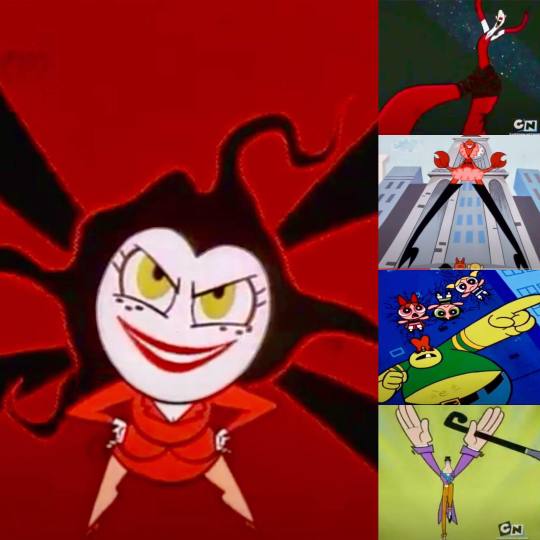
Fig. 6 Sedusa, Him, Big Billy, The Mayor of Townsville
(Source : Tumblr)
In another case, foreshortening in the film it is used to reinforce the stereotype that in order for a woman to be physically attractive, she does not have to be smart (later this stereotype was challenged by Miss Bellum 's actions.) However, in 99 percent of her appearances in the series, she is presented only as a body without a head.
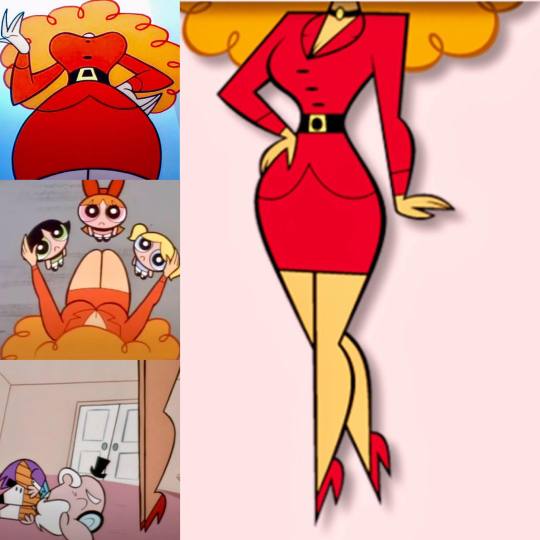
Fig.7 Miss Sara Bellum
(Source : Tumblr)
Complex scenes and the use of 'Dutch angle' in some compositions:
In some more complex scenes, where they have to present several actions at once, the layout artists have divided the field diagonally, which allows them to present two parallel actions in one frame.
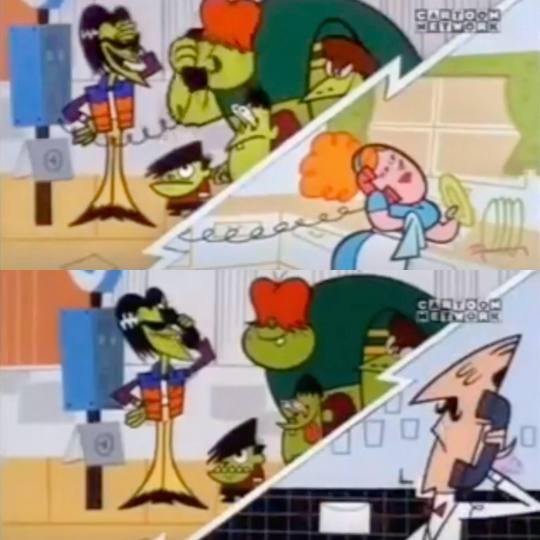
Fig.8 Gangreen Gang I
(Source : Tumblr)
The horizon is usually in the middle of the screen and coincides with the eye line of the observer. But when the scene requires tension and drama, the Dutch angle is used in the composition, which reinforces the feeling of insecurity and instability. In the case of Him, its use is a very good solution because it reinforces the stereotype that sometimes the lack of a clear gender identity can be quite confusing and even frightening.
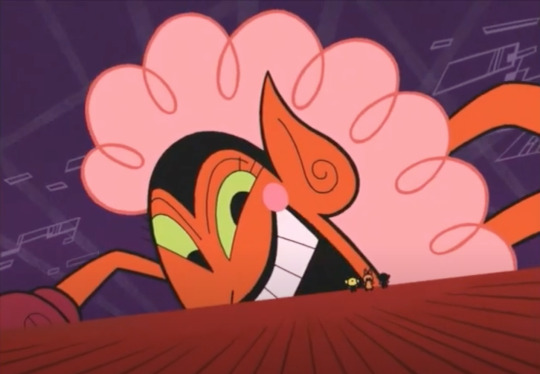
Fig.9 Him
(Source : Tumblr)
But how does it all actually begin?
The year is 1998. A new American animated series about superheroes is conquering the world. This is the story of the three little girls Blossom, Bubbles and Buttercup, living in the city of Townsville, who were invented by their father and scientist Professor Utonium. Girls have superpowers and use them in their fight against evil: starting with local street thugs, and ending with superpowers of universal evil such as insidious demons and vampires.The series was produced by Hanna-Barbera for Cartoon Network and created by animator Craig McCracken. Conceived and developed under the name 'Whoopass Stew!' in the second year of McCracken's studies at the California Institute of the Arts (CalArts), the series debuted in late 1998, has its 6 seasons (78 series), as well as a special edition of the feature film and a special edition of the anniversary film to celebrate the 10th anniversary, as well as various comics, video games, clothes, toys and other franchise and ended in March 2005, winning nominations for six Emmy Awards, nine Annie Awards, and millions of fans around the world.In the animated series, the leadership implicitly belongs to Blossom (orange long hair, pink dress wide black resembling a karate belt and a red bow); the sweetest is Bubbles (blonde braids, sky blue clothing) and the most combative is Buttercup (black short hair, green clothing).
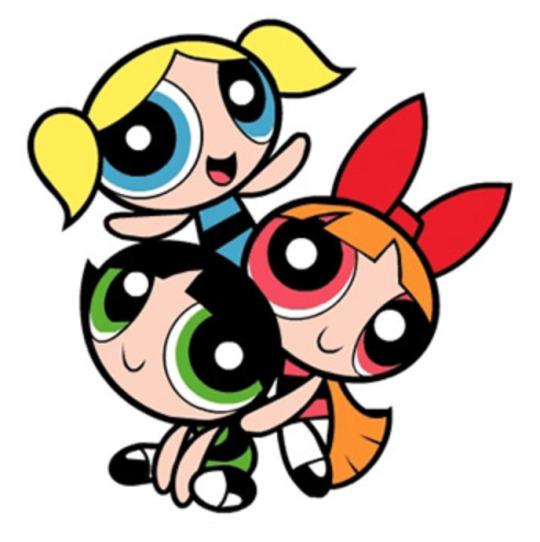
Fig.10 The Powerpuff Girls
(Source: thefluffybunch.fandom.com )
The shape of the body, head and eyes of each of them resembles a circle (in fact, the bodies of all three are disproportionately small and their eyes are disproportionately large relative to their heads), but in fact this deformation, as well as the emphasis on their round shape is not random. Round shapes are characteristic of the feminine principle and thus the idea of dominant feminism is introduced.Initially, nothing threatening is found in the vision of the girls, but if they are confronted by a bully or a villain, they immediately become a real threat to him, showing their super fighting skills, which shatter the traditional notions of ‘femininity’ associated with meekness, shyness and cowardice. Over time, it turns out that McCracken was right about his choice of this type of female superhero; many other films on the subject appeared, and critics began to define the movement of "girl power" that began in the 1990s as feminism from the Third Wave (the Second Wave is typical of the feminist movement of the 1960s.) The new movement does not aim to oppose to the femininity of power, but on the contrary, shows that both are possible together and the result is quite attractive. Many emerging figures and groups stand behind this concept and develop it to varying degrees, starting with the young female punk band of the 90's Riot Grrrls, who first showed that rebellion and femininity are not mutually exclusive concepts, and continuing the trend with the hysteria for a indisputably the most successful girl band in the history of pop music, the Spice Girls, which openly promotes ideas of female power and potential.
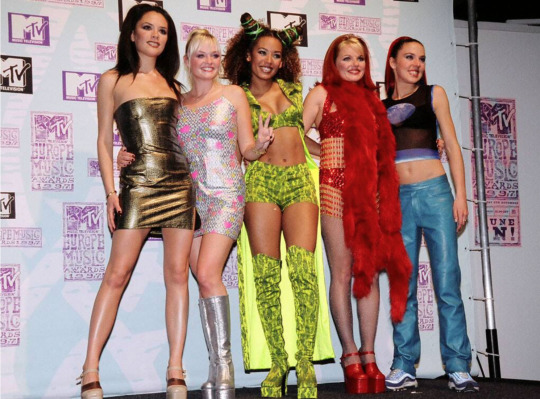
Fig.11 Spice Girls
(Source: eonline.com )
Unlike the feminist generation of the 60s which advocates for gender equality, for privileges of working mothers and against the gender discrimination in applying for job, as well as against sexual abuse against the physically weaker sex, the girls of 90s do not need to be rescued, they do not want to be protected or receive special privileges because of their gender as they can handle everything on their own. They openly and clearly state their place in the world through their behavior, as well as by following the messages in the texts of their favourite girl bands.In the 90s, not only was the dominant male role in society challenged (which is the main merit of The Second-wave feminists) but it went even further by challenging the stereotype that femininity and sexuality were something that should be to be denied (or belittled at best). Young women in the 90's believe that female attractiveness should be manifested as an expression of opportunities and strength. In this sense, maintaining good physical and intellectual condition are mandatory challenges, and films such as "Buffy the Vampire Slayer" (1997) and "10 things I hate about you" (1999) only prove it. In ‘10 Things I Hate About You: Kat, Rom-Com Feminist’ (2020) ,Kat Stratford (Julia Stiles' character) reads Sylvia Plath and chose the role of an antisocial and self-sufficient feminist, because she is fully aware the strength of her intellect and abilities, but in the same moment she is attractive, smart and physically fit young woman.
So, is the fictional character Lara Croft from the 2001 series of video games and film, who portrays her as a smart and physically fit young archaeologist who takes risks and copes no worse than men with many challenges on the way to achieving her goals, and thus becoming a role model for a thousands of young women of her generation.
As can be seen, in 90s the women can be strong and independent and to deal with their enemies alone and from this current point of view the myths about their dependence on men remains in the past.
From all the above it can be concluded that in creating the three Powerpuff Girls, Craig McCracken is not only influenced by all these processes, but also manages to visually present the destruction of the stereotype for the weakness and insecurity of femininity, as well as myths about the social and role of women dependent on men in a particularly original way through the interactions of Blossom, Bubbles and Buttercup with the rich variety of the other characters in the series.
Conditionally, the interaction with these characters will be divided into four groups:
- interaction of Powerpuff Girls with a female characters,
- interaction of Powerpuff Girls with a male characters,
- interaction of Powerpuff Girls with a creatures and
- interaction of Powerpuff Girls with non-heteronormative characters,
and a comparison will be made between the Powerpuff Girls and one representative of each one of them.
Among the interaction of Powerpuff Girls with the other female characters stands out one - that of glamorous assistant Miss Sara Bellum. This character challenges one traditional stereotype. Her emphatically feminine appearance (and as already commented more precisely her body because her head is missing) does not necessarily mean that she is stupid, but on the contrary; when necessary, she can make the right decisions and even be quite 'intellectually sharp'.
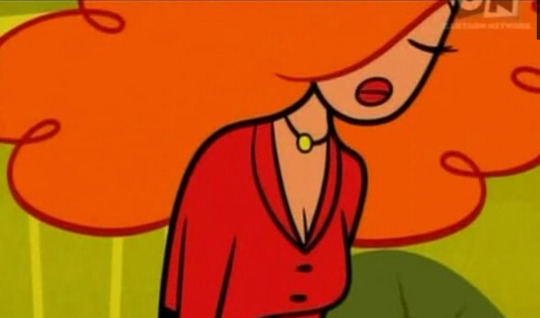
Fig.12 Miss Sara Bellum’s head
(Source : Fandom.com)
As for the interaction of the Powerful Girls with the male characters, there is a kind of "competition" between them. This is clearly evident in the interaction of girls with Gangreen Gang - a group of troublesome hooligans and bandits, known for their antisocial behavior, who live in the town dump in Townsville. Among their members are Ace, Snake, Lil 'Arturo, Grubber and Big Billy. The boys are mostly known for committing petty crimes, such as vandalism and harassment of the young or elderly. (Ace has to some extent "evolved", replacing a member of the Gorillaz who was imprisoned for a while). The Gang are characterized by their green skin, and all the gang members have black hair, except for Big Billy, who has red hair. They appear to be teenagers, but they vary widely in height and body type. Their species is mutated human.
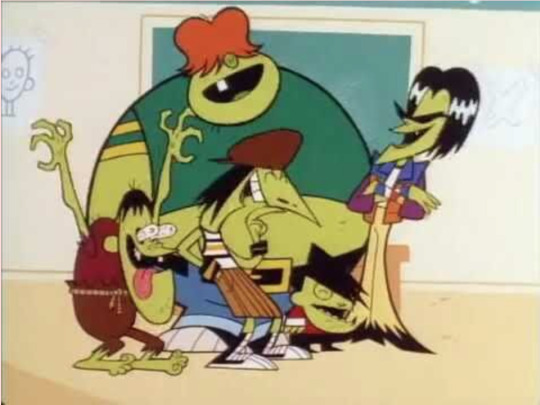
Fig.13 Gangreen Gang II
(Source : Fandom.com)
The three girls, however, worthily oppose and manage to defeat them, not only because they use their physical superpower, but also because they can be friendly and smiling and say "please" and "thank you." Thus, another stereotype is challenged - that of the Second-wave feminists, who are traditionally bad, while Craig Mkraken's heroines behave in a traditionally acceptable way.
The other characters in the animated series are portrayed according to traditional notions of gender stereotypes: Townsville's female characters are portrayed as cowards (for example, they are afraid of insects until someone fearless man comes to save them), while the male characters are portrayed as aggressive. Fuzzy Lumpkins, Amoeba boys and especially Mojo Jojo, who is the main antagonist and the main enemy of Professor Utonius and the strong girls, are constantly planning to conquer the world or at least cause harm to someone in the neighbourhood. Mojo spend a lot of his time inventing a new weapons or technology and even on several occasions his plans succeeded.
At the end, the feminine principle wins again, thanks to a typical feminine quality that men can't stand: being nice. In this way, the female 'being nice' becomes a super power, but falling into male hands, it is again subjected to destructive criticism, which reinforces the gender stereotype.
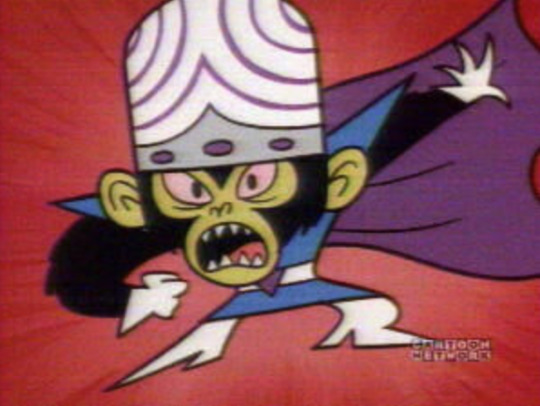
Fig.13 Mojo Jojo
(Source : Fandom.com)
After all this, however, there is a more special kind of interaction between the girls and someone who is 'a villain so evil, so sinister, so horribly vile that even the utterance of his name strikes fear into the hearts of men. The only safe way to refer to this king of darkness is simply... HIM." With these words this mysterious character is represented by The Narrator in the episode ‘Octi Evil’.
What do we know about this mysterious being? Very little. - Him is a highly manipulative creature that has a high enough charisma that he persuade and manipulate the beings; - He is an all powerful being. The most powerful in the world second only to thegirls. Or at least, that is what the series wants us to think; - He has a interesting relationship with the professor. Usually the focus is on his atypical (unrecognizable) gender identity and here the confusion comes from the fact that he speaks with an ominous high voice and wears high heels and sock nets, which is a sign of non-heteronormativity, according to the existing stereotype. Can this strange and contradictory character really be characterized as non-heteronormative and can this characteristic contribute to the naturalization of prejudice or the exclusion of groups that identify as non-heteronormative (such as Queer.) According to Goodreads " Queer identitites may be adopted by those who reject traditional gender identities and seek a broader, less conformist, and deliberately ambiguous alternative to the label LGBT."(Goodreads,2020)
As a result of the above, the following question arises: can Him, who embodies the world's super-evil, serve as an ideological support to viewers whose beliefs and cultures mock non-heteronormative people and violate their rights? And is his characterization of super-evil really related to his unclear gender or is it a consequence of his unacceptable social behavior?
Interesting is the opinion of Dennis, according to which "Him presents the latest trends in animation that show homosexuality as "either stupid or sinister" (p. 138, 2003) and he is about to be right because in the new animated version of "Mr. Magoo" released in 2019, the assistant of the main antagonist called Little Weasel is again presented with the characteristics of a non-heteronormative person, which again raises the question of why (and is it correct) to use a non-heteronormative character in a villainous role and in a negative context? What causes the construction of such a stereotype in the minds of young viewers?
On the one hand, it is good for children to be prepared for life, because in it they will encounter all kinds of challenges and all kinds of people (Him could be of any gender); on the other hand, what makes Him really evil and dangerous is his manipulative nature and the fact that he is a collection of contradictions. The interaction with someone who has similar behavior in the real life can always deceive or confuse them, because they are often not well prepared and they don't know how to react.
This essay stands behind the thesis that the feeling of absolute evil in the series does not come from the non-heteronormative man (Him), with whom the Powerpuff Girls often interact, but is the result of the contradictions from which this character is built: Santa Claus and Satan; human body and legs and lobster clamps instead of arms; a voice as thin and attractive and as powerful and furious as lightning. https://www.youtube.com/watch?v=wd3PJHCrQ7k
The contradiction inherent in his nature causes shock and horror in the observer, not the lack of gender identity. This character once again emphasizes the fact that evil is stronger than all genders and individual traits.
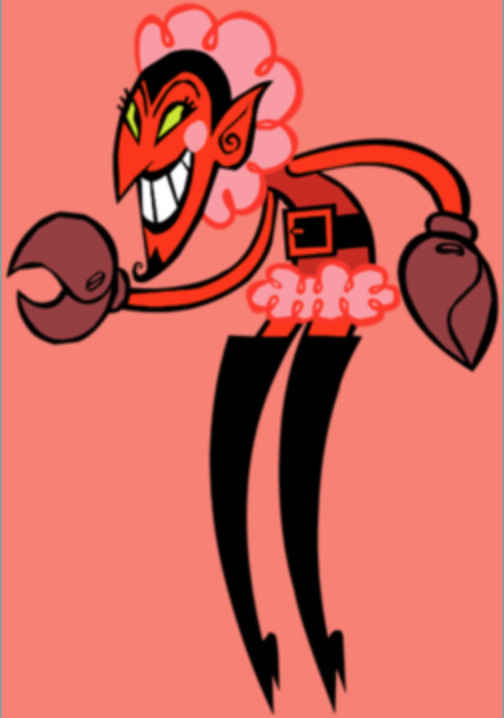
Fig.14 HIM
(Source : Fandom.com)
Although this essay supports the notion that to be non-heteronormative is not something perverted and dangerous that adults should protect children from, the animated series "My Little Pony: Friendship is Magic" which appeared 12 years after "Powerful Girls" is evidence of how indirectly an animation designed for young girls can become a challenge to the social construction of gender through the subsequent manifestations of subculture (a different folklore currents and communities such as "Bronies", or Japanese postmodern art movement known as "Superflat", and - why not - the art sharing platform DeviantArt / partly /.)
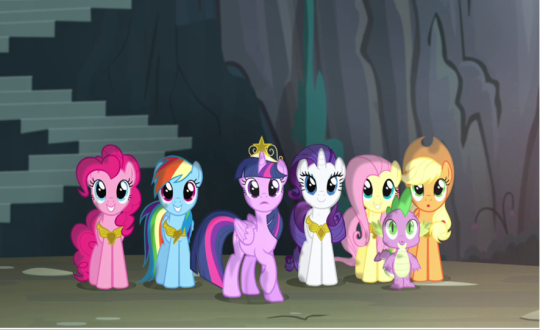
Fig.15 My Little Pony : Friendship is Magic
(Source : Fandom.com)
The last discussion in the essay will be related to the question of why animation intended for a target group of little girls, such as "My Little Pony", affects a certain group of people (young men who call themselves ‘bronies’) and how they interpret the gender stereotype of the cartoon characters (or lack thereof). What is the role of children's animations in the creation and development of a subculture, such as the network of Bronylore sites?
Although Lauren Faust, creator of "My Little Pony" and wife of Craig McCracken, (who previously worked with him on "The Powerful Girls") is adamant that the 'My Little Pony : The Friendship is Magics' was conceived and implemented as an animation for little girls, this series is becoming very popular among an unusual demographic audience of young men who call themselves "Bronies" (The term is a sum of the abbreviated "bro" and "pony" and distinguishes adults fans, most often ages 18 - 34 who follow" My Little Pony : Friendship Is Magic" from the target audience of young girls.) The Bronies use "4chan" or create their own network of online sites "Bronylore", where they publish their comments and comics related to the show. Why this series has such an impact on these young men and how the bronies interpret the gender stereotype of the pony cartoon characters (or lack thereof)? According to Claire Burdfield "Riley Kilo, a Brony and 4chan user, stating that “people were attracted to the cuteness of the pony avatars”.(Burdfield, 2017) This essay assumes that this is possible because the animation, itself, allows the bodies of the characters to be reshaped in ways that transgress conventional barriers of sexuality and allow viewers a much wider scope in which to explore alternative ways of seeing the place of gender identity within human society. But what the essay emphatically does not accept is the fact that Bronylore identifies potentially transgressive themes in My Little Pony, develops them in deliberately uncomfortable ways, and neatly adapts them to real-life issues relevant to its followers’ social and psychological lives. With this, this sites become a danger for the real target group, this still unformed audience of little girls and boys, who could get a misconception about the meaning of concepts such as friendship, love, cooperation, with an only one wrong click on such a site - something that the creators of the animated series would definitely not want to happen.
With all of the above, an attempt was made to look into the world of modern animation by comparing existing gender and behavioral stereotypes in society and their reflection in the children's animated series "Powerful Girls" and "My Little Pony: Friendship is Magic".
- Descriptive and comparative methods were used, as well as semiotic analysis, to clarify the role of composition as a natural environment where the characters operate and supporting factor for their behaviour.
- By comparing relationships: girls (courage, strength) / boys (defeat); young (energy, opportunities) / old (weakness, incompetence, helplessness, infantilism) were challenged some of the stereotypes in society.
Other existing understandings were challenged, such as that female beauty and glamorous appearance does not necessarily mean that women are stupid or girl's brilliance and beauty as more necessary than knowledge and learning.
- Through historical review and documentary facts, the terms "Second Wave Feminism" and "Third Wave Feminism" were examined and compared, and evidence of their impact on the creation of the cartoon characters Bubbles, Blossom and Buttercup was applied.
- The question of why (and whether it is correct) to use "non-heteronormative" gender in villainous roles was answered as part of a broader discussion of the relationship: gender - social behaviour. The essay defended the position that it is not gender that makes a character good or bad, but his social behavior. This also protected the rights of certain social groups, such as Queer society.
- Using modern data, in a broader context were analysed some manifestations of the subculture, which arose as a result of the impact of the animated characters from the series "My little pony: Friendship is magic" on certain social groups. An answer was given to the question of what provokes these certain groups of fans to self-identify as "Bronies" and to create digital content on specialised sites.
After the whole study, the academic literature and working on this essay, my belief that I wanted to practice animation became even stronger. I have the feeling that one of the most prominent schools in the world for training of such significant contemporary animators as Craig McCracken, Lauren Faust, Genndy Tartakovsky (Dexter's Laboratory, 1996) and a decade later - Pendleton Ward ( Adventure Time, 2010) is the California Institute of the Arts (CalArts) and my desire to deepen my knowledge, moving forward with a master's degree in animation, takes me exactly there. Moreover, Cartoon Network Studios (my most dreamed workplace as a future practitioner) is also located there, in California. Of course, it's just a dream for now, but as Bubbles said : "You should do what you want to do." And Blossom would add : "Being a Powerpuff Girl isn't about getting your way...It's about using your own unique abilities to help people and the world we all live in."
REFERENCES :
● Alex J Taylor, Mr Magoo and Modern Art, Oxford Art Journal, Volume 42, Issue 3, December 2019, Pages 412–414, https://doi-org.ezproxy.herts.ac.uk/10.1093/oxartj/kcz015
● BBC, (2020), Second Wave Feminism, [Online], Available at: https://www.bbc.co.uk/archive/second-wave-feminism/zdhw382?fbclid=IwAR0CgNwQQ01Zx8KZTs7OXpt2zQ7x7b3baPrH2J2zYOnpu2lF2pLsMPqmjfA , [Accessed 18 Oct.2020]
● Burdfield C.,(2017), A brief history of the 4chan ‘Pony Wars, [Online], Available at: https://cstonline.net/a-brief-history-of-the-4chan-pony-wars-by-claire-burdfield/?fbclid=IwAR1nWN411GjOsah3AFcDgEsxgAOM5iWgzLtKdORGKHxjKWeQLEoKnbFHxZs , [Accessed 18 Oct.2020]
● ELLIS, B., 2015. What Bronies See When They Brohoof: Queering Animation on the Dark and Evil Internet. Journal of American Folklore, 128(509), pp. 298-314,369-370.
● Goodreads, (2020), Queer, [Online], Available at: https://www.goodreads.com/genres/queer?fbclid=IwAR0UXLjDqiOC_Hk2RwrLglZcMY2G6iPFofxJMlsiTsuwq1oQOvzifXNx1ZU , [Accessed 18 Oct.2020]
● Griffin, M., Harding, N. and Learmonth, M. (2017) ‘Whistle While You Work? Disney Animation, Organizational Readiness and Gendered Subjugation’, Organization Studies, 38(7), pp. 869–894. doi: 10.1177/0170840616663245.
● Hager Lisa, (2008), Saving the World Before Bedtime : The Powerpuff Girls, Citizenship, and the Little Girl Superhero, Children's Literature Association Quarterly Volume 33, Number 1, Spring 2008 Johns Hopkins University Press , Article
● Kirkland, E. (2010) ‘The Politics of Powerpuff: Putting the ‘Girl’ into ‘Girl Power’’, Animation, 5(1), pp. 9–24. doi: 10.1177/1746847709356643.
● Knight G.L. (2010), Female Action Heroes : A Guide to Women in Comics, Video Games, Film, and Television, Publisher ABC-CLIO, LLC, p. 228-237
● Richter K.,(2010), My Little Homophobic, Racist, Smart-Shaming Pony, [Online], Available at: https://msmagazine.com/.../my-little-homophobic-racist.../ , [Accessed 18 Oct.2020]
● Rosenfeld M.,(2000), Powerpuff Girls: Good Guise, Bad Guys, [Online], Available at: https://www.washingtonpost.com/archive/lifestyle/2000/12/26/powerpuff-girls-good-guise-bad-guys/79a54733-9e40-4633-a5c4-46c040bff6c2/ , [Accessed 18 Oct.2020]
● Santos, G., Mancio, C. P., & Maranho, E. (2019). Queer representation incorporated at “Him”, character of “The Powerpuff Girls". Journal of Science and Technology of the Arts, 11(1), 11-21. https://doi.org/10.7559/citarj.v11i1.588
● Schmidt G.,(2016), Cartoon Network’s Powerpuff Girls Fight Evil on TV and Beyond, [Online], Available at: https://www.nytimes.com/2016/04/04/business/media/cartoon-networks-powerpuff-girls-fight-evil-on-tv-and-beyond.html?fbclid=IwAR262Wmc4CU-5uN33JczcQnvr8Q7BOc9PXKi7UNp0O_gpxouSz3vnO8foOs , [Accessed 18 Oct. 2020]
● The Take,(2020), Is the character HIM from “The Powerpuff Girls” transgender? [Online], Available at: https://the-take.com/watch/is-the-character-him-from-the-powerpuff-girls-transgender?fbclid=IwAR3Ubj88aK55Zv4MY_tD5vapAdZGq8KmbBom0fHjnA1KYBZJwjPYH82UdUA , [Assecced 18 Oct.2020]
● Wineman D.,(1998), SIGNOFF; Never Underestimate the Power of a Puff, [Online], Available at: https://www.nytimes.com/1998/11/15/tv/signoff-never-underestimate-the-power-of-a-puff.html?fbclid=IwAR0ylJhQJ11WVzoTKHq7GR-wyIXjix6uMDv8TrXvFUEMdIZxz5eCdDbuus4 , [Assecced 18 Oct.2020]
LIST OF ILLUSTRATION :
Fig.1. The City of Townsville [online image] Available at: https://powerpuffgirls.fandom.com/wiki/Townsville?fbclid=IwAR3K_KazdzNZdCXBLY89bcQVCf4ffktRpe5P4Q4yCK-gNFobQ1fgmw6RJls , [Accessed 15 Oct 2020]
Fig.2. Ponyville [online image] Available at:
https://mlp.fandom.com/wiki/Ponyville?fbclid=IwAR3N6cqy-H-xhT9kjoe4w7OwDzoqfreRRaqxBeiSeDYJBpOm5JELMcjo0D8 , [Accessed 15 Oct 2020]
Fig.3. The bedroom of Powerpuff Girls [online image] Available at: https://weheartit.com/entry/327702990
[Accessed 15 Oct 2020]
Fig.4. Fluttershy's bedroom [online image] Available at: https://www.derpibooru.org/1144404 ,
[Accessed 15 Oct 2020]
Fig.5. Atmosphere composition : Rainy, Cloudy, Sunny, Underwater, Outer Space, Smoky, Foggy, Dusty [online image] Available at: https://madoddball.tumblr.com/post/635218255016067072/how-the-animation-series-powerpuff-girls-and-my?fbclid=IwAR2wYp-NQXROdoxU8QWJTZnU86s0yLL2PX8RC2yVttpN3FXXgYllI-eEDMM , [Accessed 9 Dec 2020]
Fig.6. Sedusa, Him, Big Billy, The Mayor of Townsville, [online image] Available at: https://madoddball.tumblr.com/post/635218255016067072/how-the-animation-series-powerpuff-girls-and-my?fbclid=IwAR2wYp-NQXROdoxU8QWJTZnU86s0yLL2PX8RC2yVttpN3FXXgYllI-eEDMM , [Accessed 9 Dec 2020]
Fig.7. Miss Sara Bellum, [online image] Available at: https://madoddball.tumblr.com/post/635218255016067072/how-the-animation-series-powerpuff-girls-and-my?fbclid=IwAR2wYp-NQXROdoxU8QWJTZnU86s0yLL2PX8RC2yVttpN3FXXgYllI-eEDMM , [Accessed 9 Dec 2020]
Fig.8. Gangreen Gang I, [online image] Available at: https://madoddball.tumblr.com/post/635218255016067072/how-the-animation-series-powerpuff-girls-and-my?fbclid=IwAR2wYp-NQXROdoxU8QWJTZnU86s0yLL2PX8RC2yVttpN3FXXgYllI-eEDMM , [Accessed 9 Dec 2020]
Fig.9. Him I, [online image] Available at: https://madoddball.tumblr.com/post/635218255016067072/how-the-animation-series-powerpuff-girls-and-my?fbclid=IwAR2wYp-NQXROdoxU8QWJTZnU86s0yLL2PX8RC2yVttpN3FXXgYllI-eEDMM , [Accessed 9 Dec 2020]
Fig.10. Powerpuff Girls [online image] Available at: https://thefluffybunch.fandom.com/wiki/The_Powerpuff_Girls , [Accessed 15 Oct 2020]
Fig.11. Spice Girls [online image] Available at: https://www.eonline.com/news/1042491/every-time-the-spice-girls-playfully-shaded-victoria-beckham-over-skipping-their-reunion-tour , [Accessed 15 Oct.2020]
Fig.12. Miss Sara Bellum’s head [online image] Available at: https://powerpuffgirls.fandom.com/wiki/Sara_Bellum_(1998_TV_series)?fbclid=IwAR28VwKq-1fvlplwTQKAdbVC7TaXwe-ChTXnl0vUTWCSMrWrumKMK15Q2X8 , [Accessed 15 Oct 2020]
Fig.13. Gangreen Gang II [online image] Available at: https://powerpuffgirls.fandom.com/wiki/The_Gangreen_Gang/Gallery?file=Gangreen_Gang_laugh.jpg , [Accessed 15 Oct 2020]
Fig.14. Mojo Jojo [online image] Available at: https://powerpuffgirls.fandom.com/wiki/Mojo_Jojo_(1998_TV_series)?fbclid=IwAR0Tieaf6nn877NUbcMH2Y5yhrETvy3Ggg381DVl6PH66J_XOlC92DvDPAk , [Accessed 15 Oct 2020]
Fig.15. Him II [online image] Available at: https://powerpuffgirls.fandom.com/wiki/HIM?fbclid=IwAR3xrLszNdwPo_m9dyqOUqcafQVvGO_cwcNxtc0W-i2LzI8EiskxkSMxv4Y , [Accessed 15 Oct 2020]
Fig.16. My Little Pony : Friendship Is Magic [online image] Available at : https://mlp.fandom.com/wiki/My_Little_Pony_Friendship_is_Magic , Accessed 15 Oct 2020]
VIDEO SOURCE :
10 Things I Hate About You: Kat, Rom-Com Feminist (2020),video, The Take, Available at : https://www.youtube.com/watch?v=3XevO7MCmGY&t=984s , [Accessed 9 November 2020]
Status: Submitted
All content copyright © 2020 v_onyeukwu
#degree essay#script#stereotypes#behaviour#female#male#queer#bronies#LaurenFaust#craig mccracken#powerpuffgirls#mylittlepony#animationmypassion
8 notes
·
View notes
Text
Eye-catching Appliqué
Author: Janne LeBlanc
In celebration of the fourth annual New York Textile Month, members of the Textile Society of America will author Object of the Day for the month of September. A non-profit professional organization of scholars, educators, and artists in the field of textiles, TSA provides an international forum for the exchange and dissemination of information about textiles worldwide.
The first thing that I noticed about this mola was its striking design. With its change of scale and variation in motif, the placement of elements filling the panel, the contrast of warm and cool colors, and its contrasts of light and dark, it is a fine example of design principles at work. The designs seem to be abstracted plant forms, although the layout is so expertly choreographed that it’s hard to distinguish the background from the foreground.
The mola blouse is made and worn by both the girls and women of the Cuna [Kuna or Guna] people of the San Blas Islands off of the coast of Panama. By now the blouse has come to exemplify traditional work of both the Cuna people and Panama itself, but it wasn’t always so. Although an exact date hasn’t been determined, the mola seems to have originated in the late 19th century. Several factors may be responsible for its introduction, among them missionaries wanting women to cover themselves, along with a population shift from the mainland to islands which proved to be a cooler and damper climate, necessitating more clothing. Since molas are made from a tightly woven trade cloth, increased trade with outside countries, facilitated by the move to the islands, was probably also a major factor in their development.
The mola blouse has changed and evolved slowly over the 20th century. The form remains basically the same – five elements define the blouse: two appliquéd panels that complement each other but are not identical, two sleeves and a one-piece yoke. Over time, the sleeves have expanded exponentially, while the body fits more closely. The imagery has changed from more abstract designs to those that are more figurative and representational.
Mola panels are worked in both appliqué and reverse appliqué techniques. Fabrics are layered on top of each other. The top layer is cut, its edges turned under and hand sewn onto the layer underneath. The panels are now sometimes also embroidered for more detail.
This blouse is most likely from the first quarter of the 20th century. The colors of blue, red and orange are traditional for early molas. The blue was most likely indigo. The seamlines show what the original color would have been though it is now quite faded from washing and wear. The red fabrics vary from a solid to a small black dot.
The body is wider than later versions and the sleeves are short and relatively square. There is at least one repair to the sleeve. The front neckline is gathered into a pale pink neckband. The seam that attaches the mola to the yoke falls just above the bust line. It is decorated with a zig-zag strip that is later replicated using commercial rick rack. Both of the calico fabrics used, at this seamline and the replacements at the shoulder seams, are from the late 19th century.
This mola blouse, like the traditions it so beautifully represents, demonstrates how a culture can sometimes simultaneously invent, adapt, and persist, as history, geography, and access to materials all change over time.
Janine LeBlanc is a collections assistant at the Gregg Museum of Art and Design at North Carolina State University. Her previous career was in graphic design.
from Cooper Hewitt, Smithsonian Design Museum https://ift.tt/2zN4J0k via IFTTT
4 notes
·
View notes
Text
Week 7-The International Typographic Style
This style originated in Switzerland in the 1950s and remained a major movement in design for over 20 years, it is also known as the ‘Swiss Style’. The Swiss/International Style of Design emerged from earlier design styles like De Stijl, Constructivism, Bauhaus, and The New Typography. This progressive movement in graphic design is not to do with the graphic design in Switzerland, but rather with the new style that had been proposed, attacked and defended in the 1920s in Switzerland.
The principles of Swiss Style are simple:
Cleanliness
Readability
Objectivity
The 20th century brought about a change from fine art into a more grid based way of designing.

I think that the Swiss Style is simplistic yet beautiful. The admire the use of bold colours and appreciation of letterforms resulting in striking designs.
The use of san-serif typeface is a key element of the Swiss Style. Those who supported the style thought that the design should focus entirely on content and have no decorative extras. Designs that follow the Swiss Style as a result focus on typography and content layout rather than textures or illustration. Some argue that the artists at this time were thinking ahead in regards to usability and interfaces within the web before it even existed- I think that this is a great point.
Eric Gill
Eric Gill, although his personal life is rather questionable. was one of the greatest and most inspirational British artists of the 20th century.
Gill established a workshop and then a printing press in 1928. He designed the typeface ‘Perpetual’ which was based on the monumental Roman inscriptions. Gill is best known for his creation of the typeface ‘Gill Sans’ although in his lifetime he actually created a total of 11 typefaces. Gill Sans is a sans-serif typeface and was released by the British branch of Monotype from 1928 onwards. It is a clear modern type and became the letter of the railways - appearing on their signs, engine plates, and timetables.
"The shapes of letters do not derive their beauty from any sensual or sentimental reminiscences. No one can say that the O's roundness appeals to us only because it is like that of an apple or of a girl's breast or of the full moon. Letters are things, not pictures of things."

1 note
·
View note